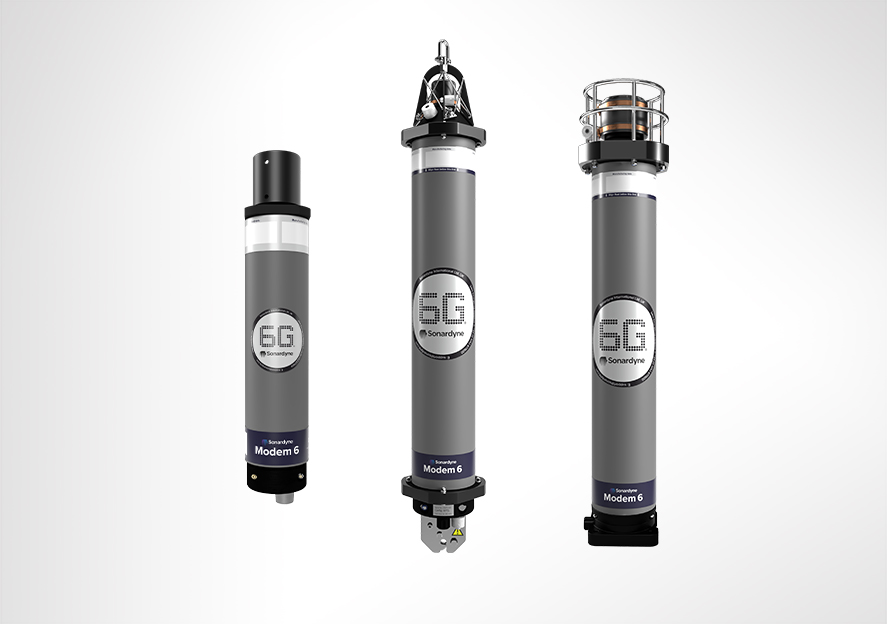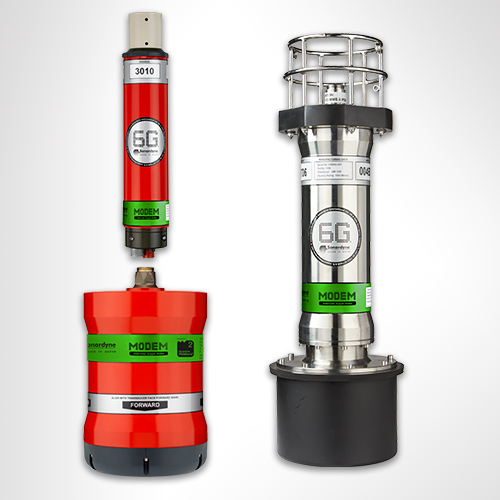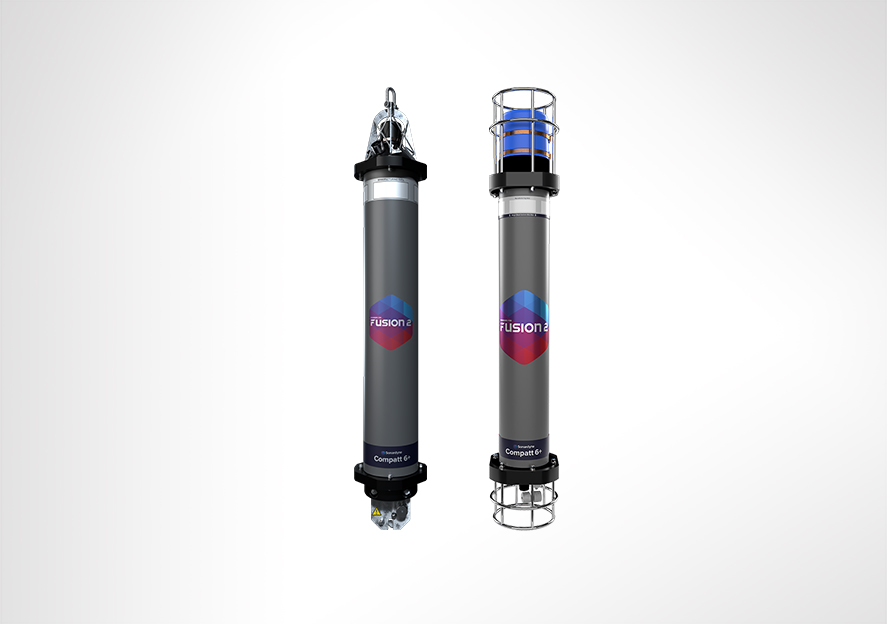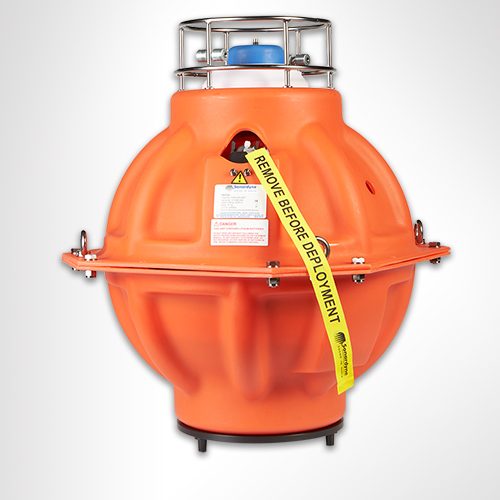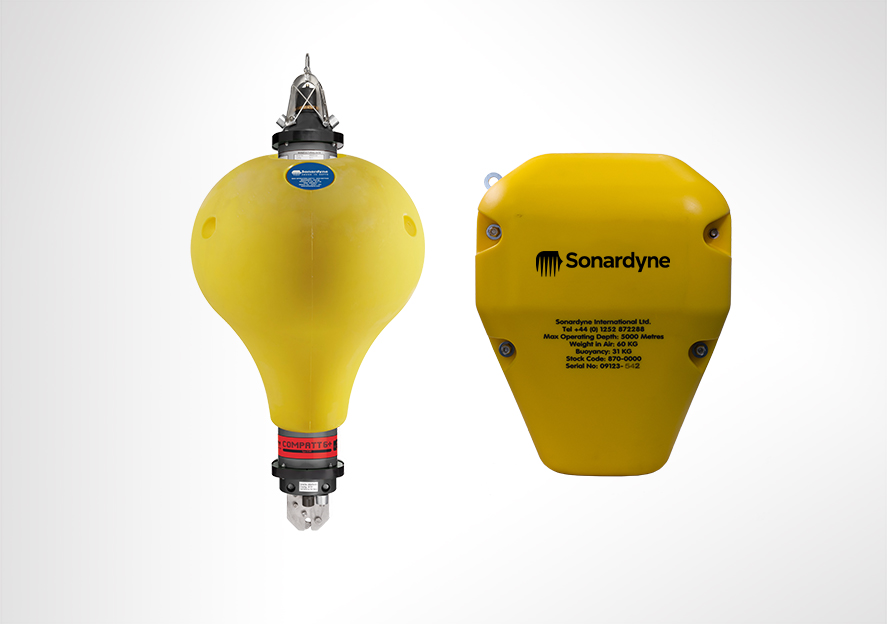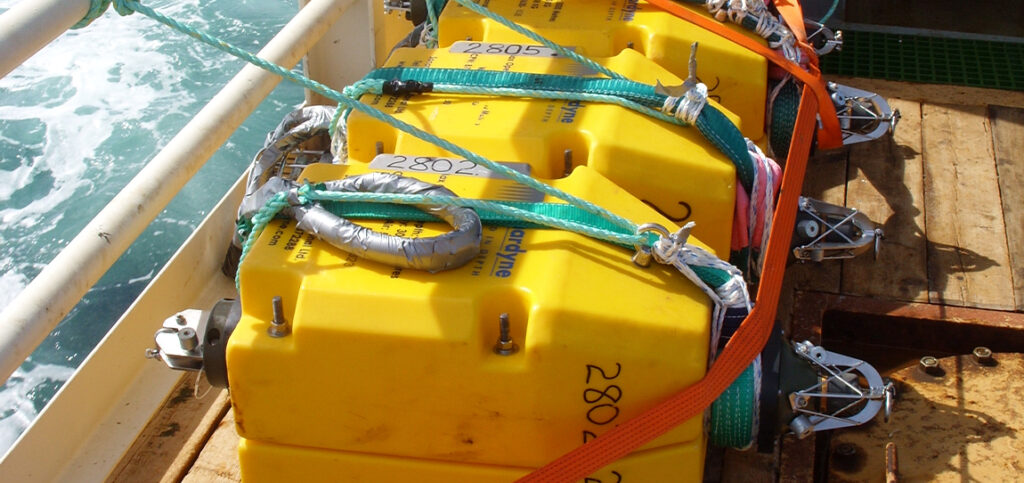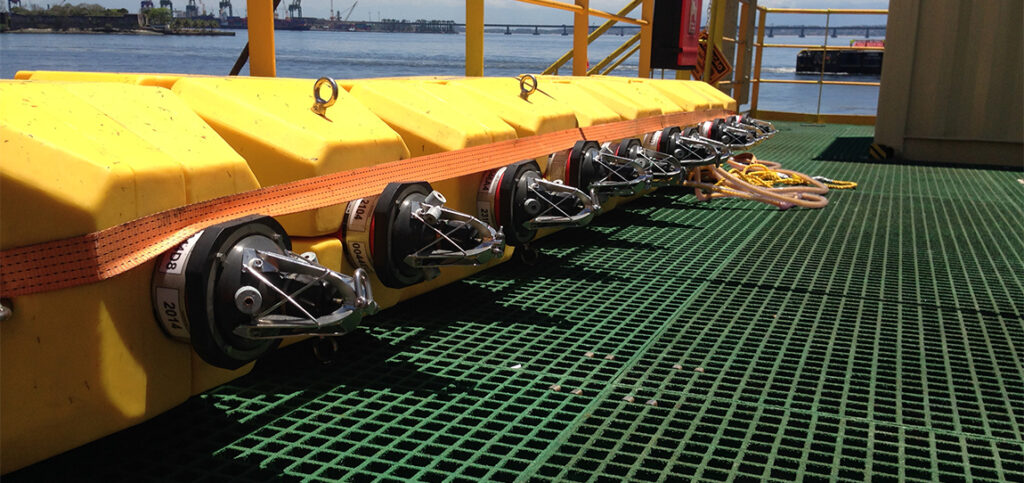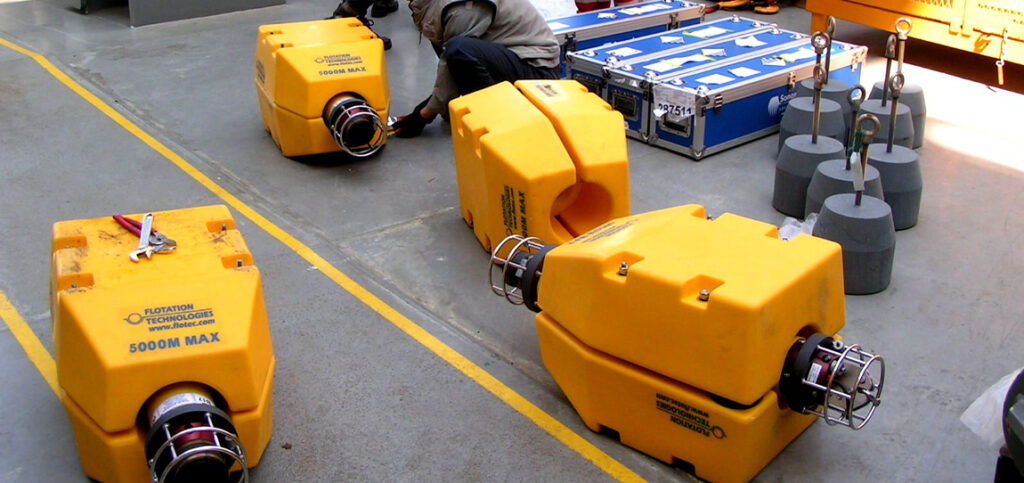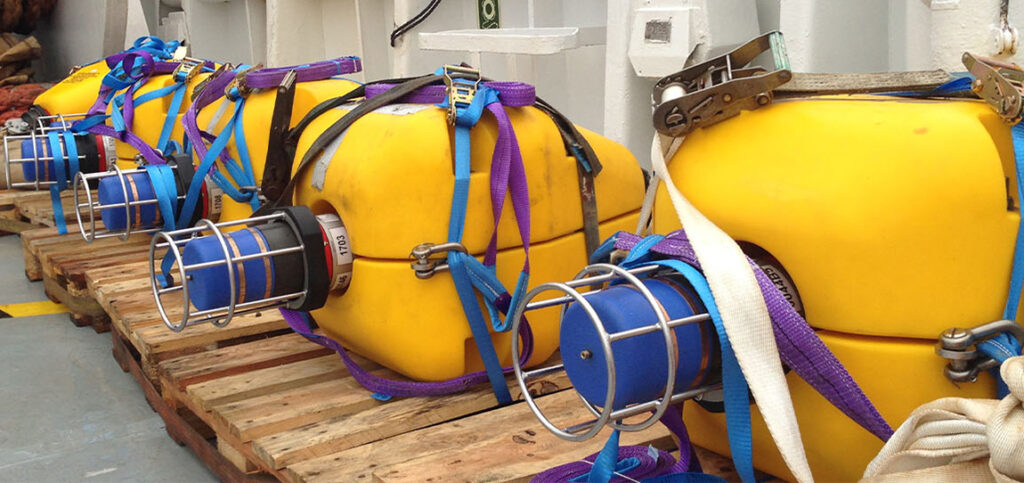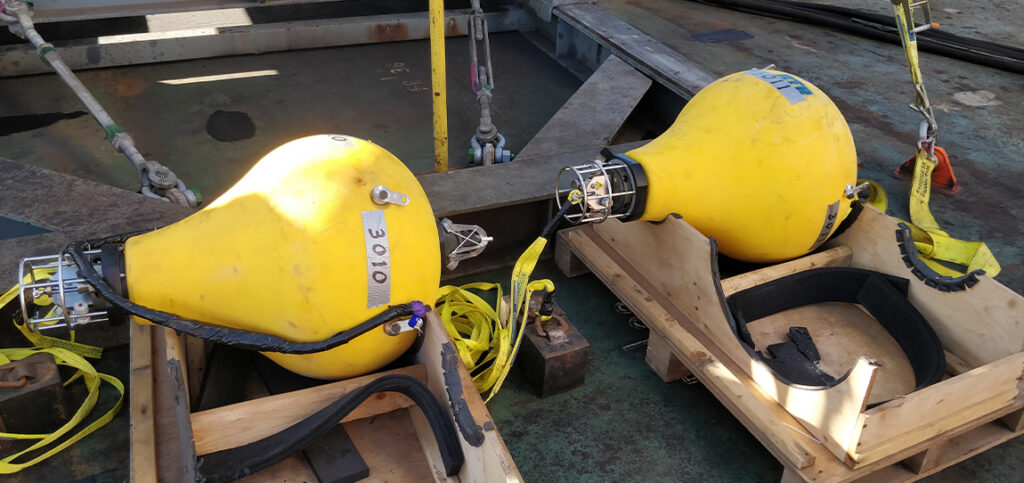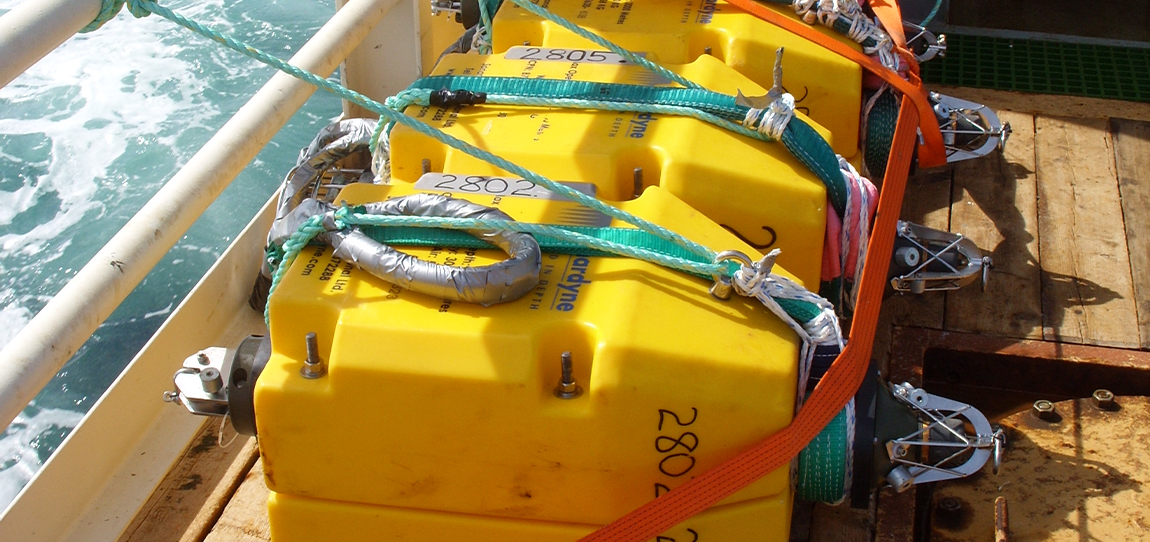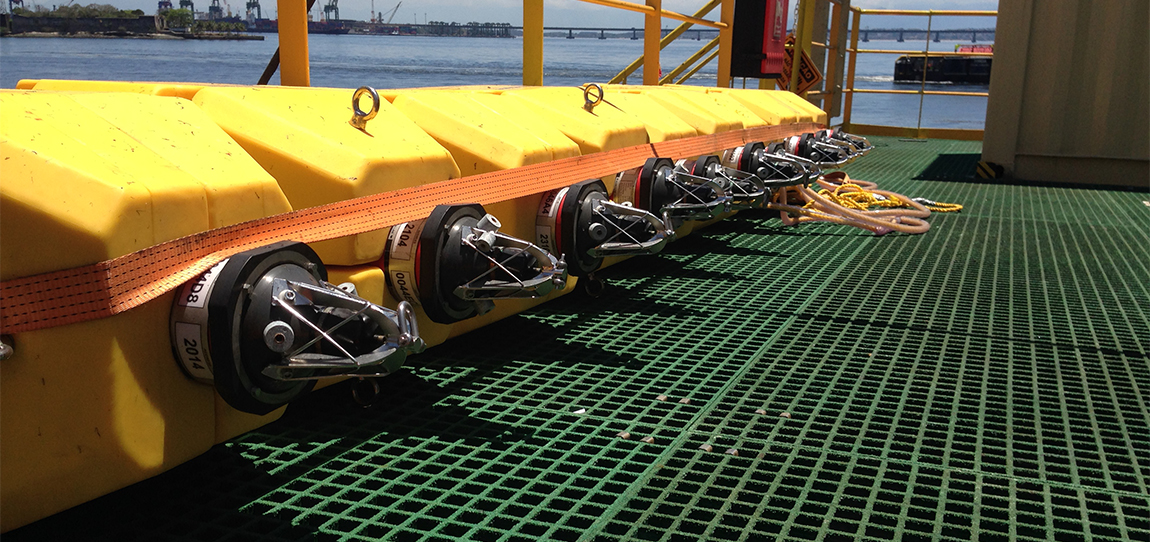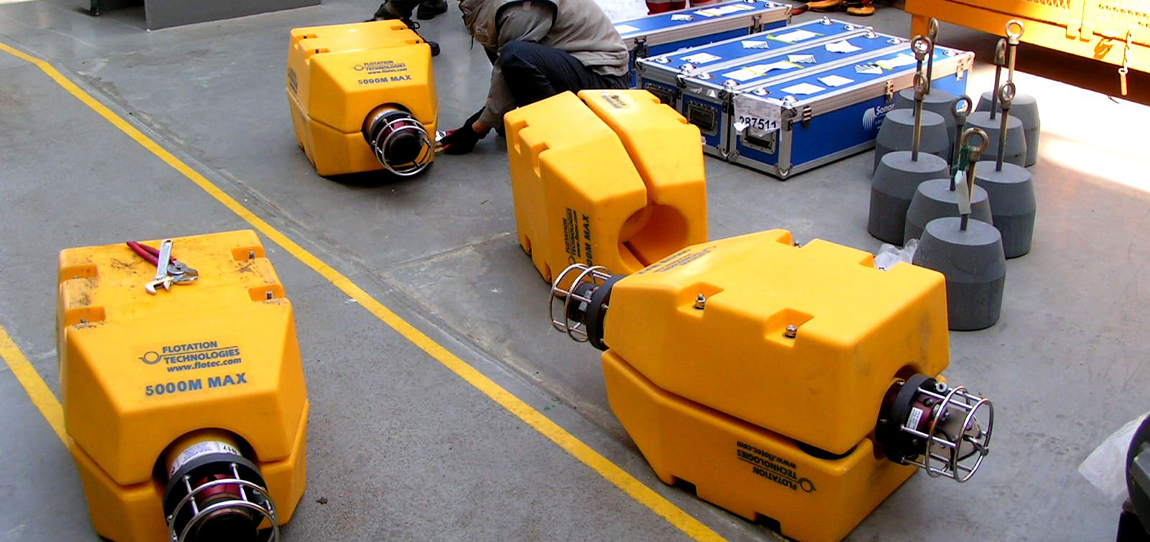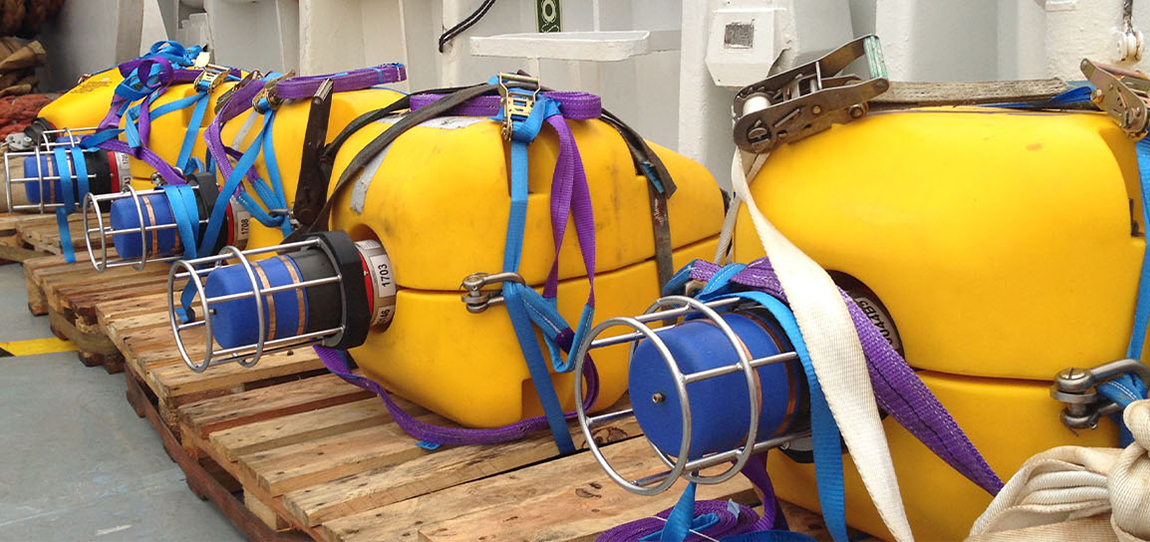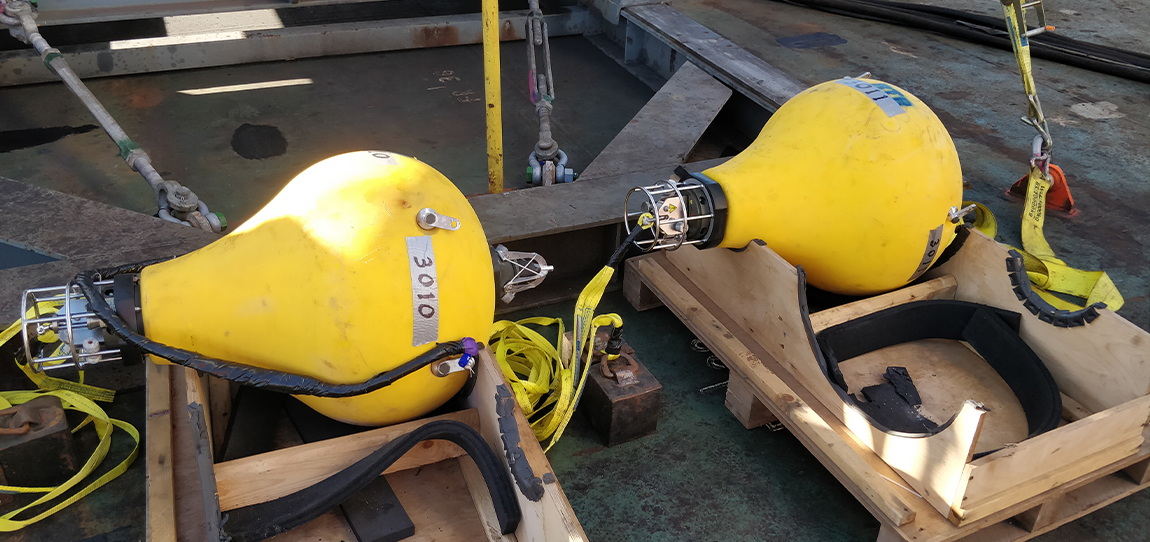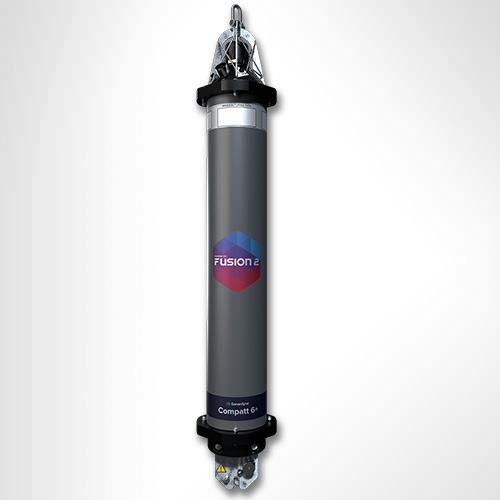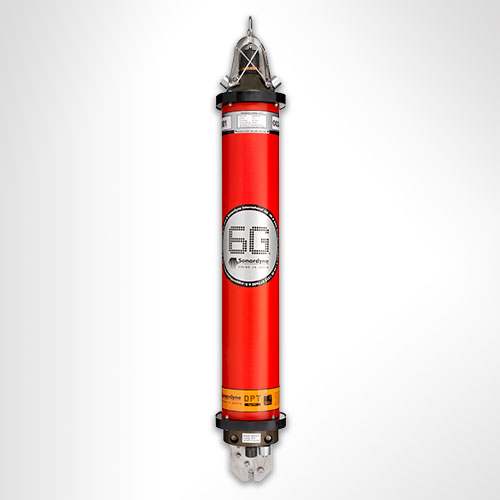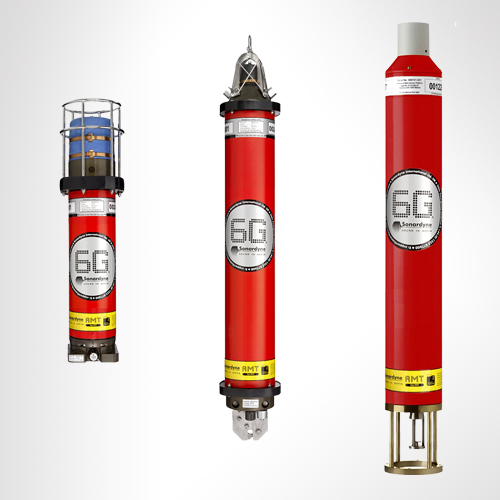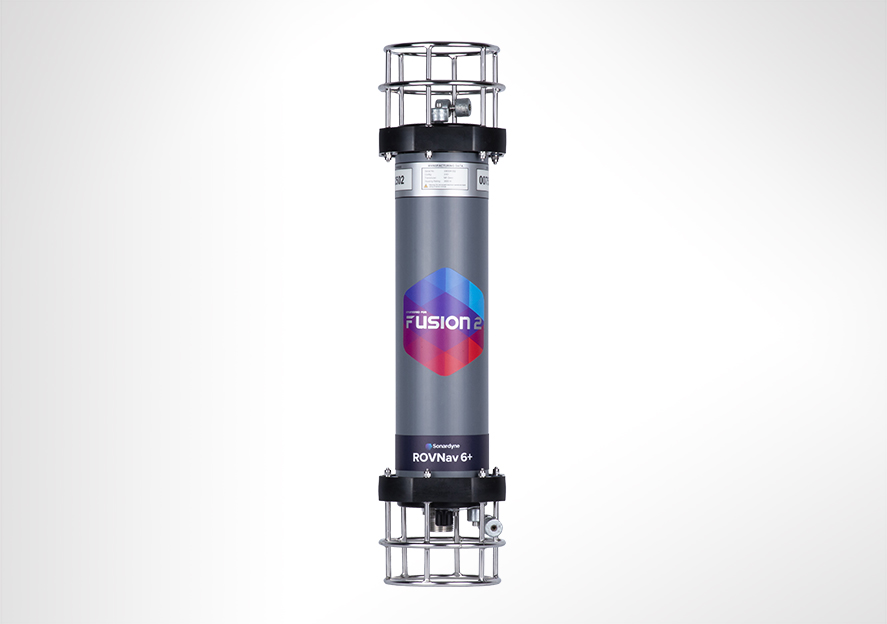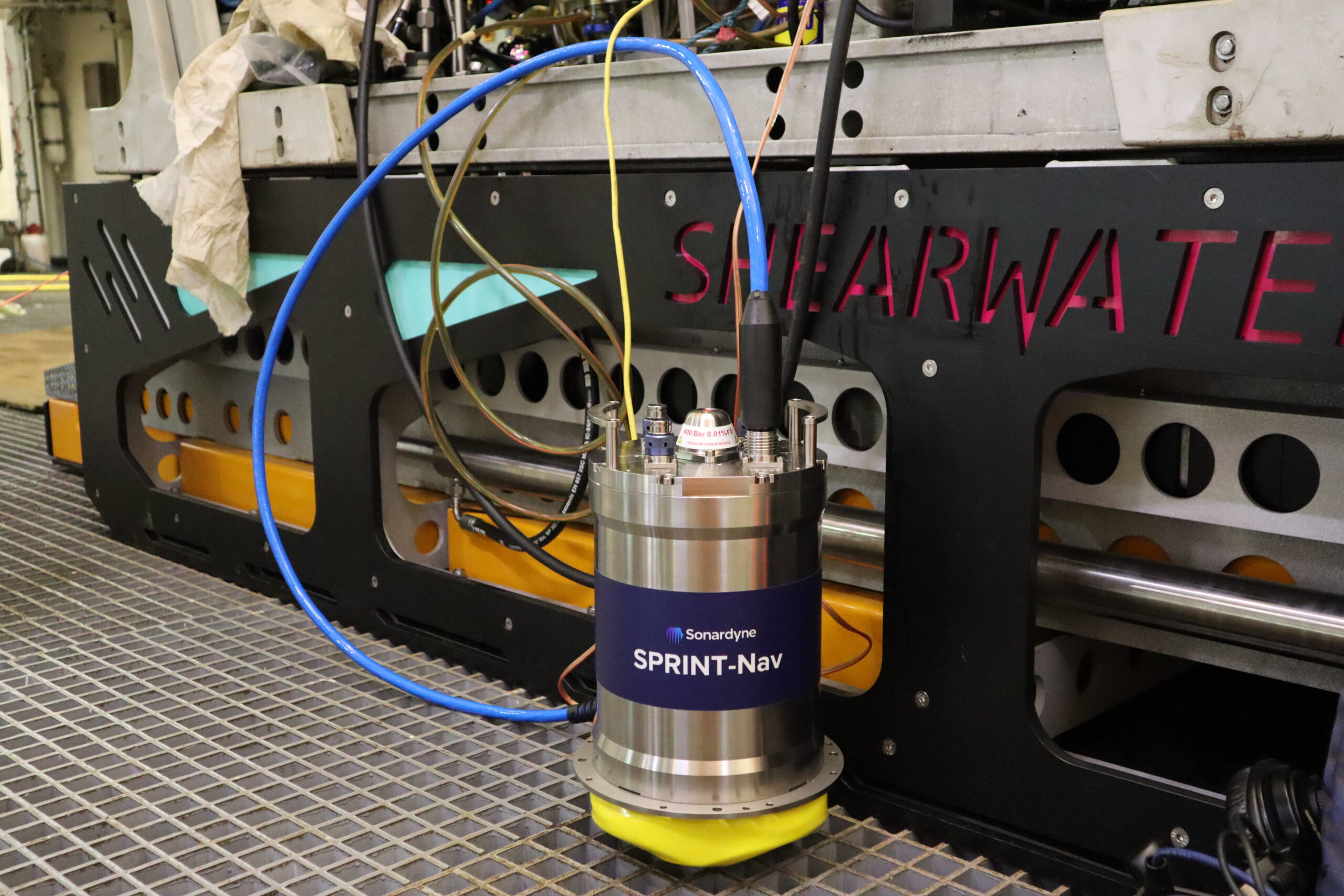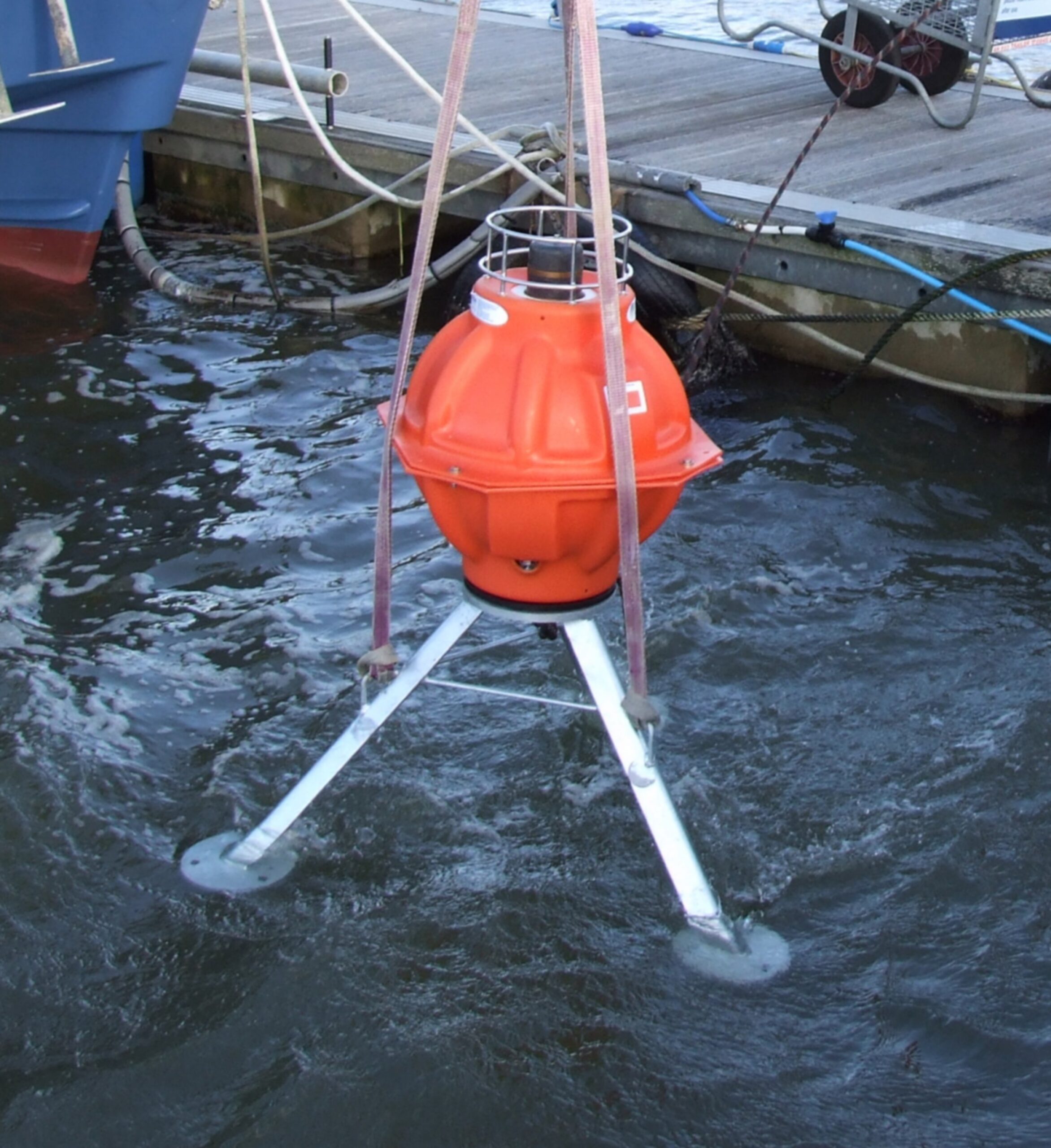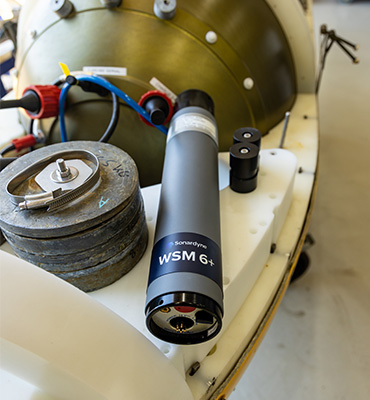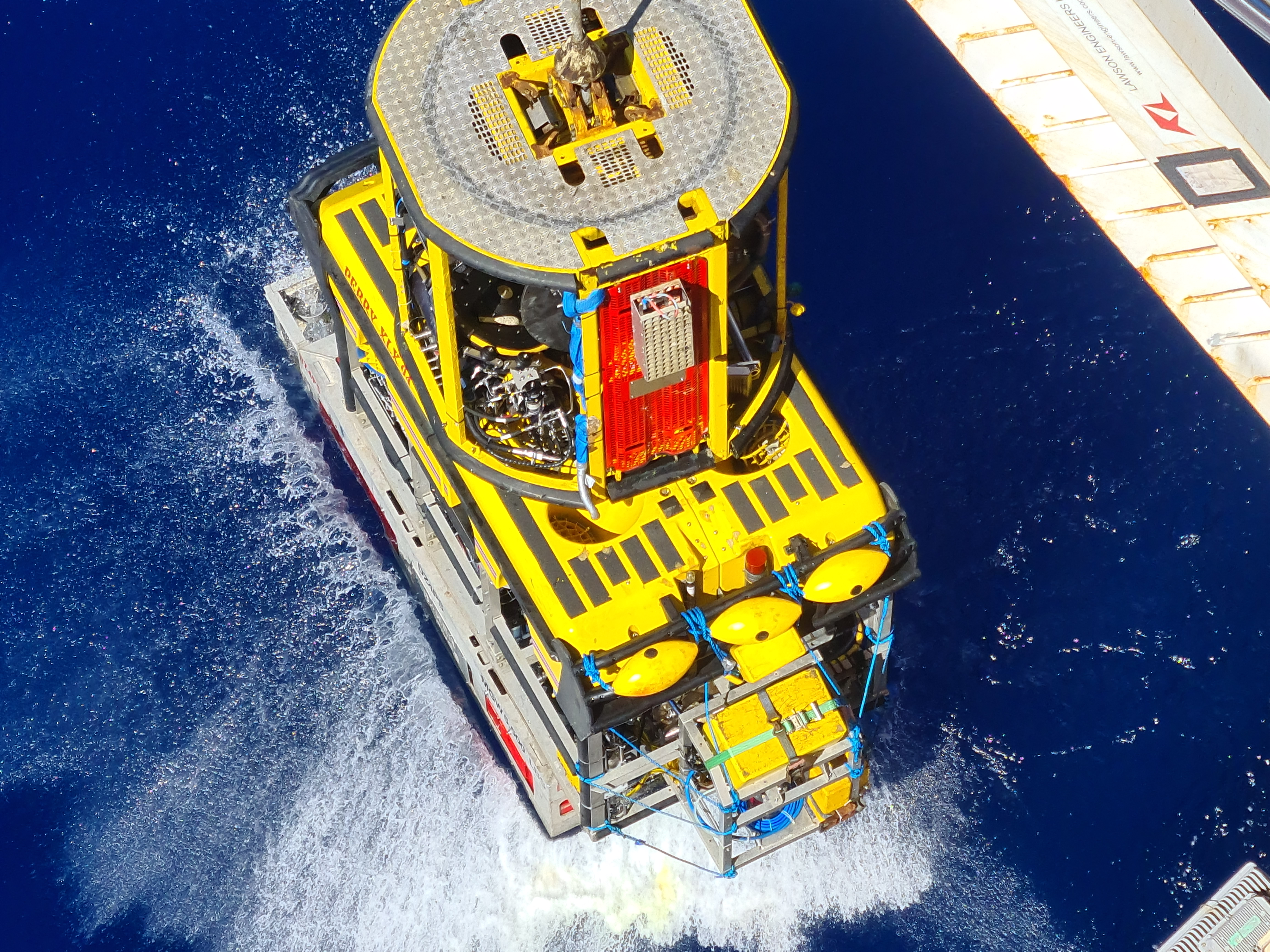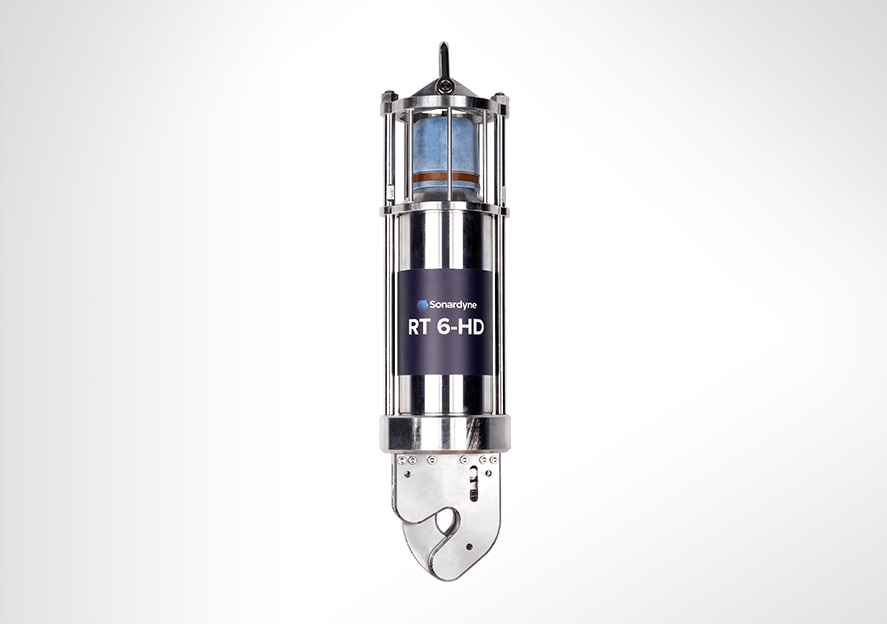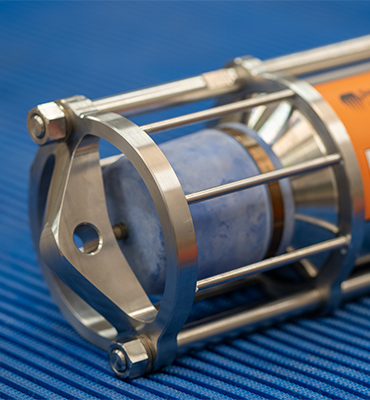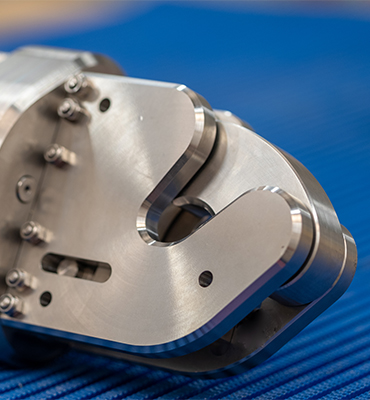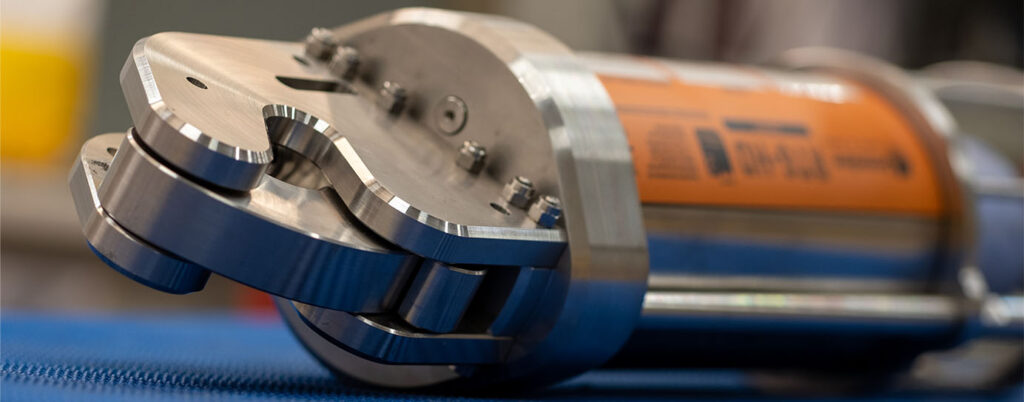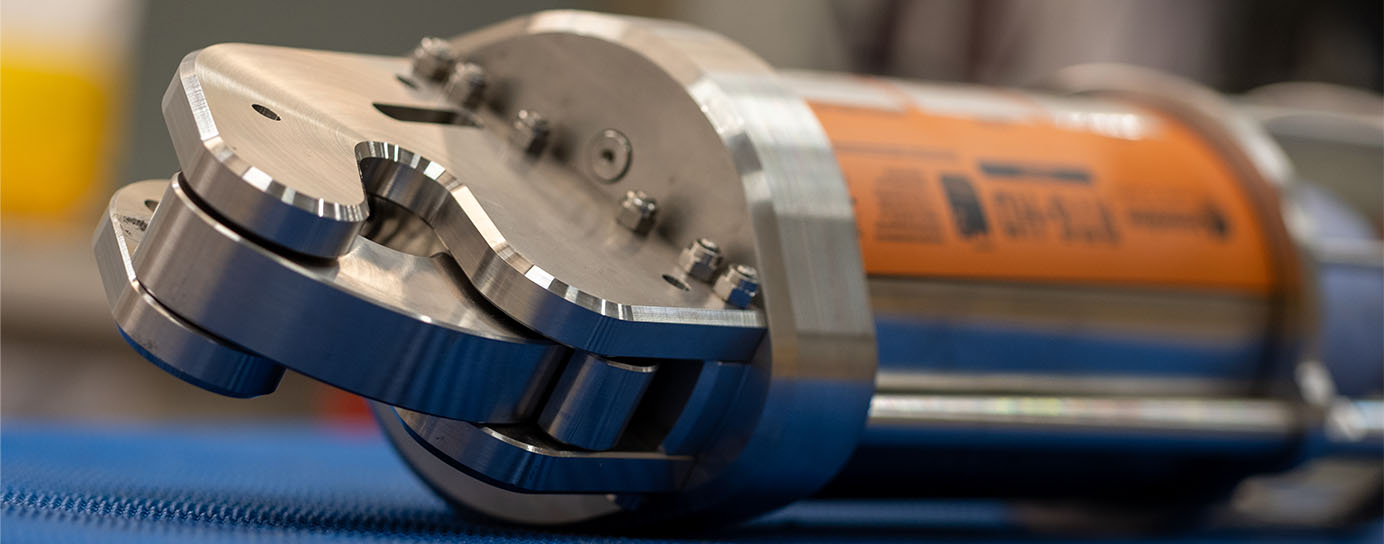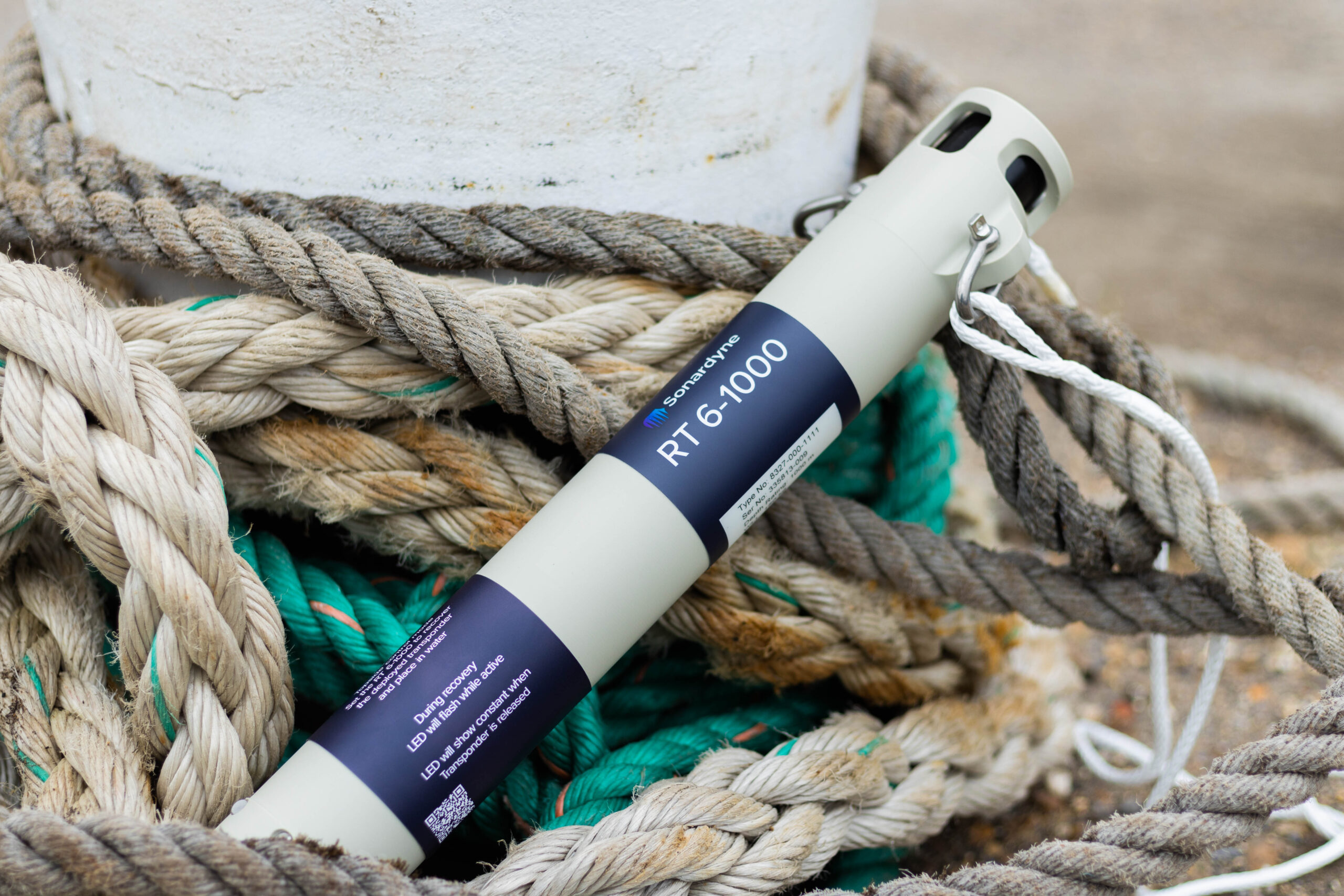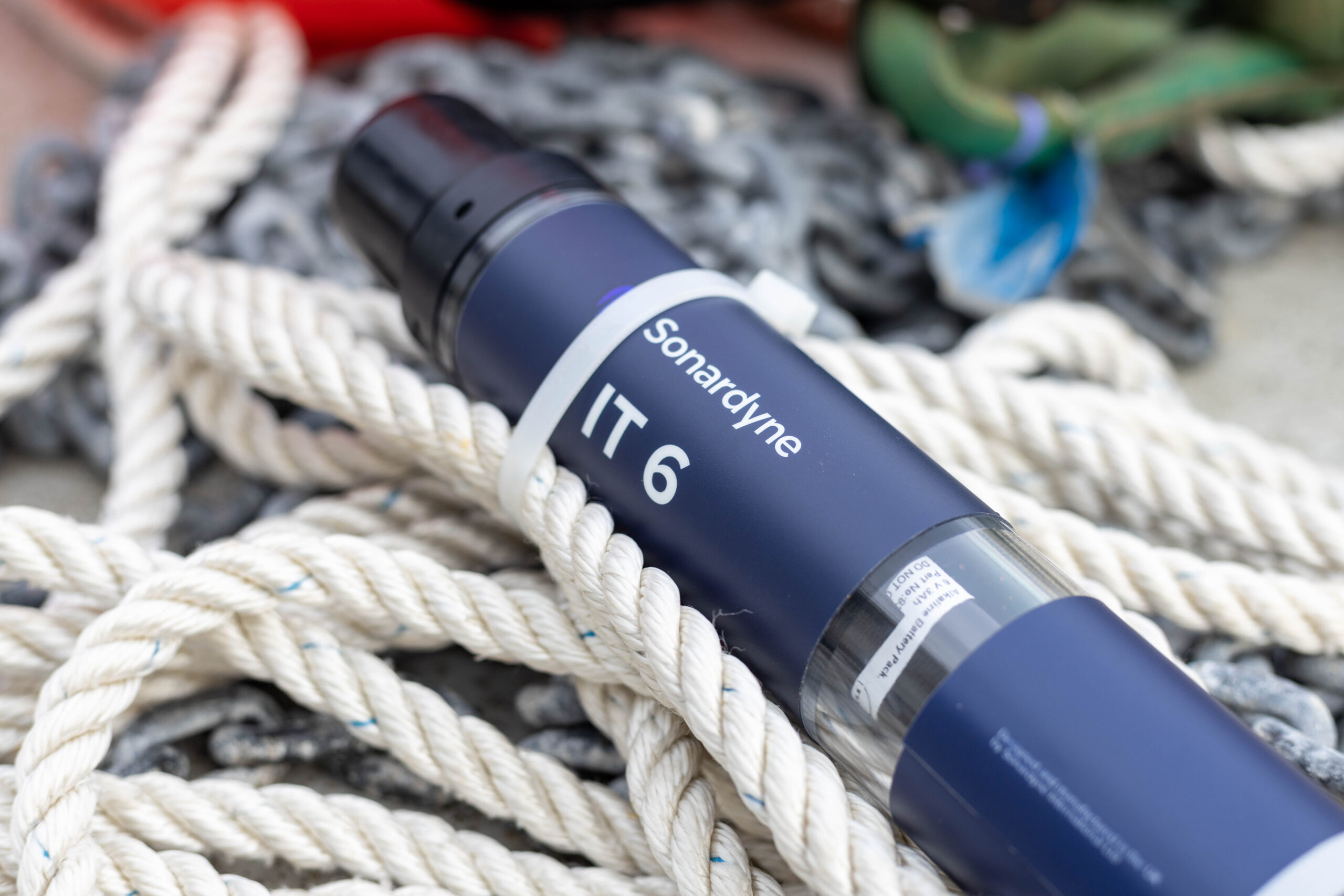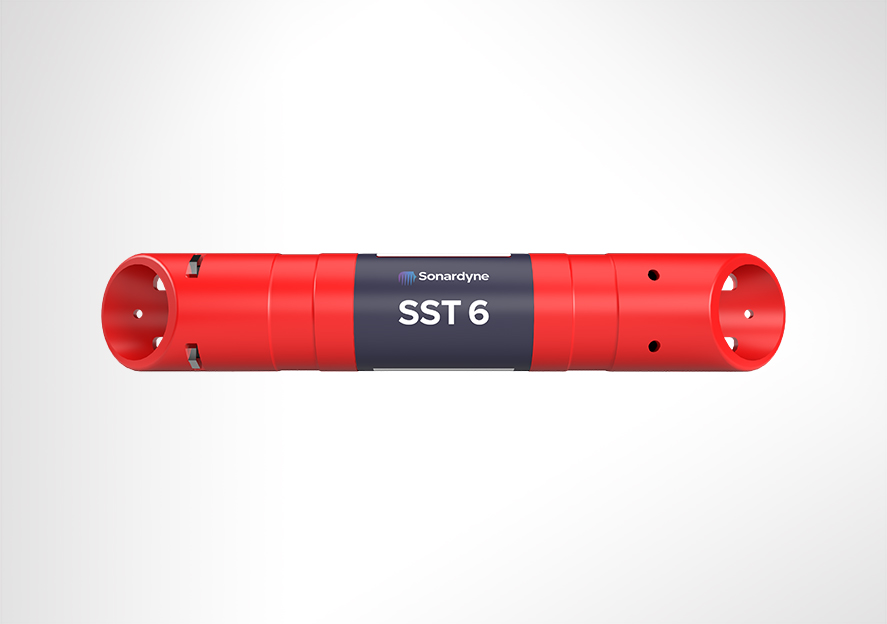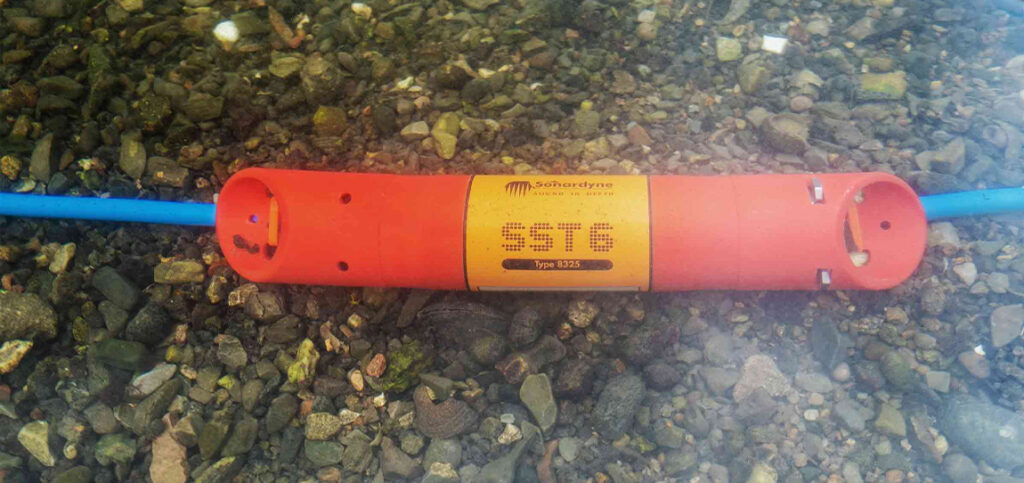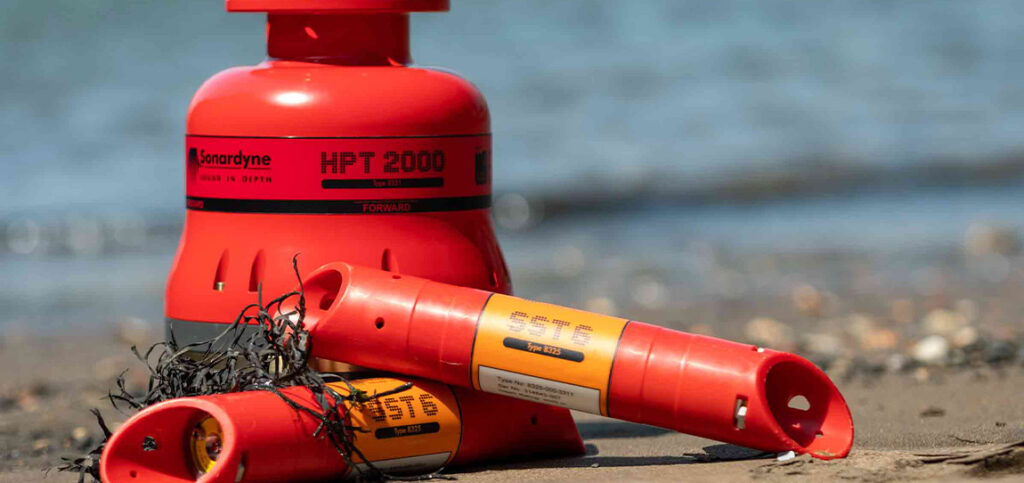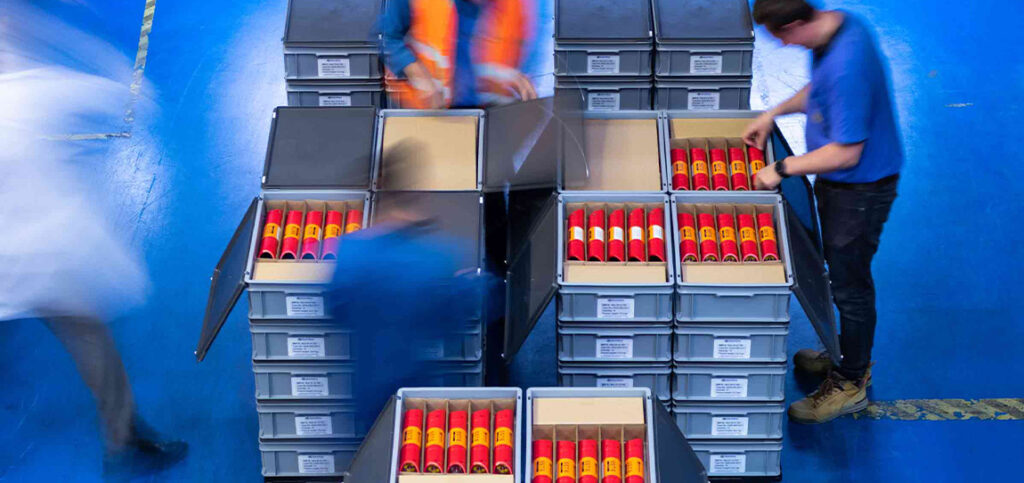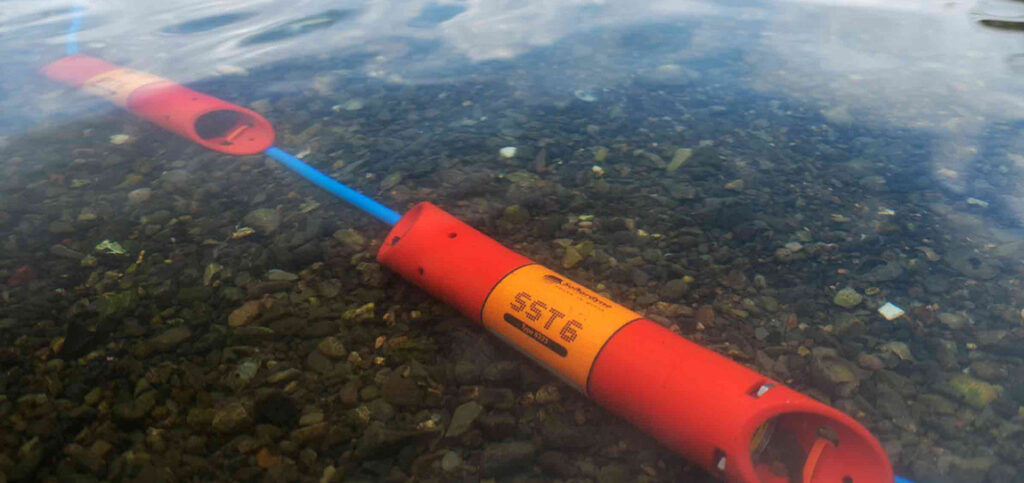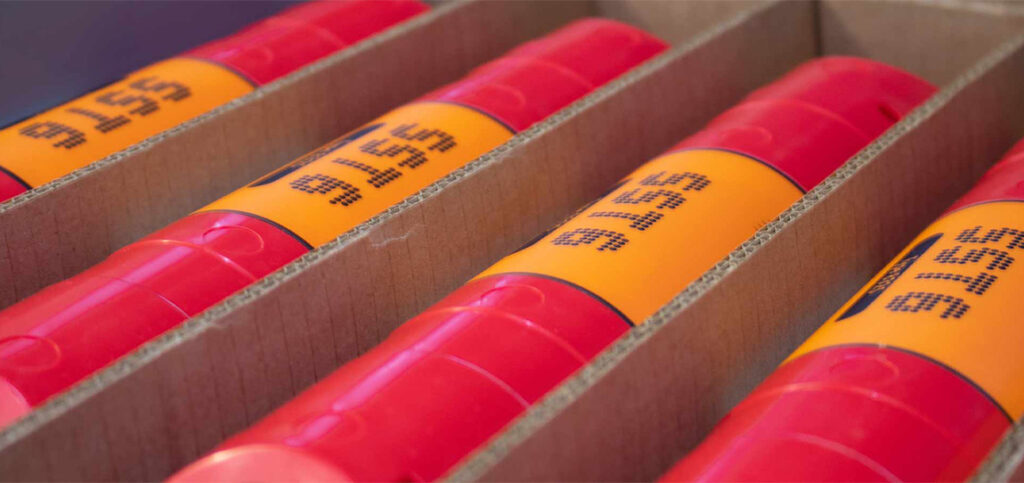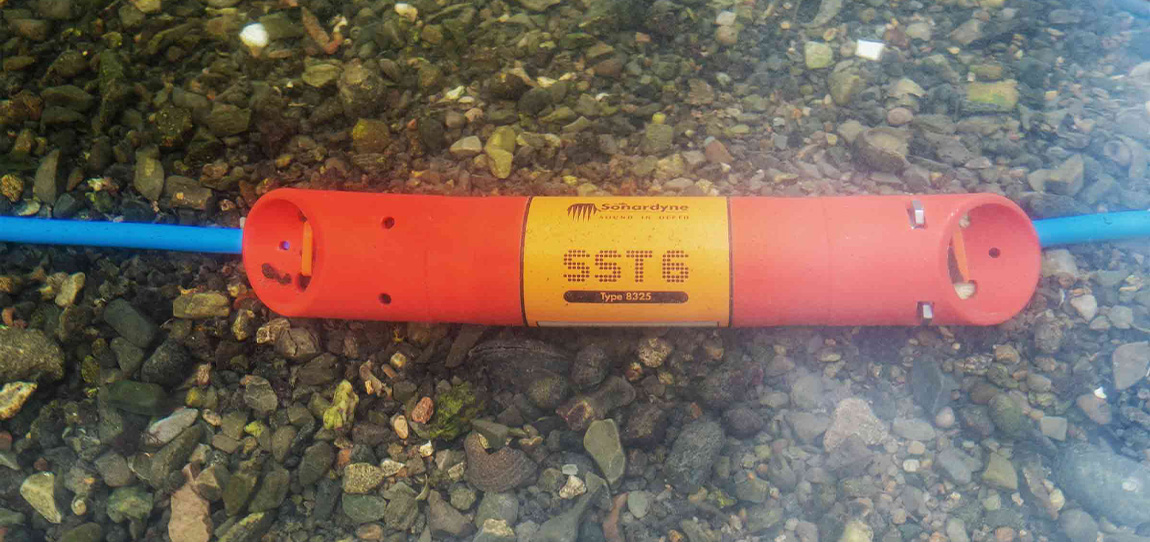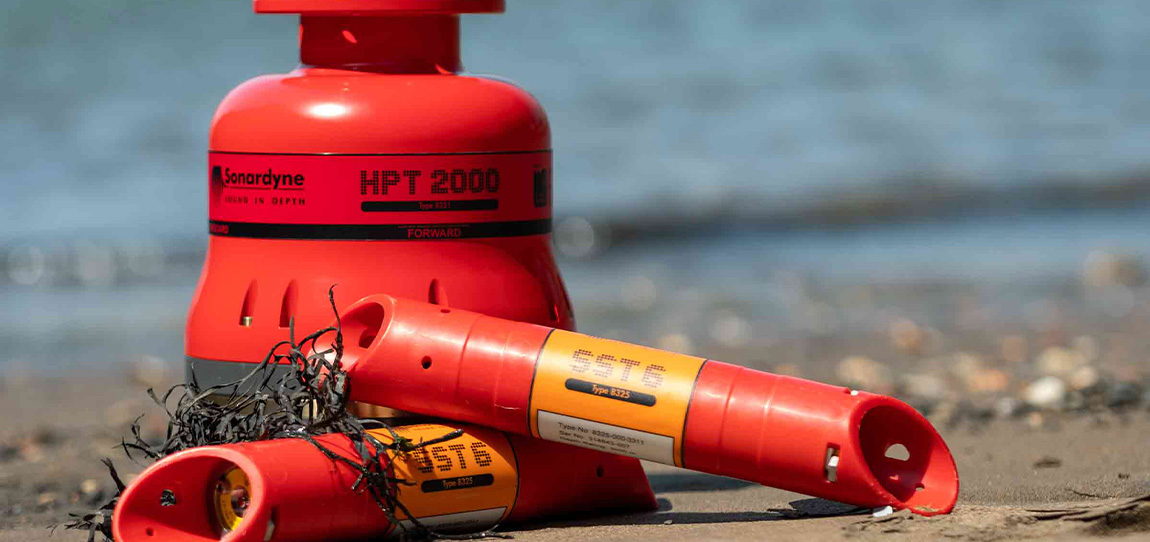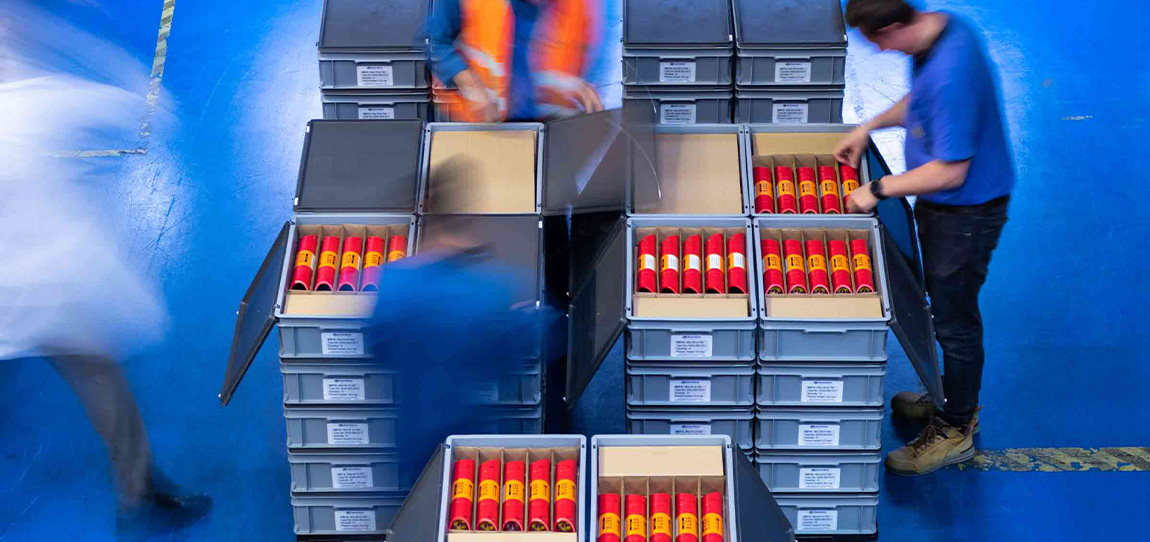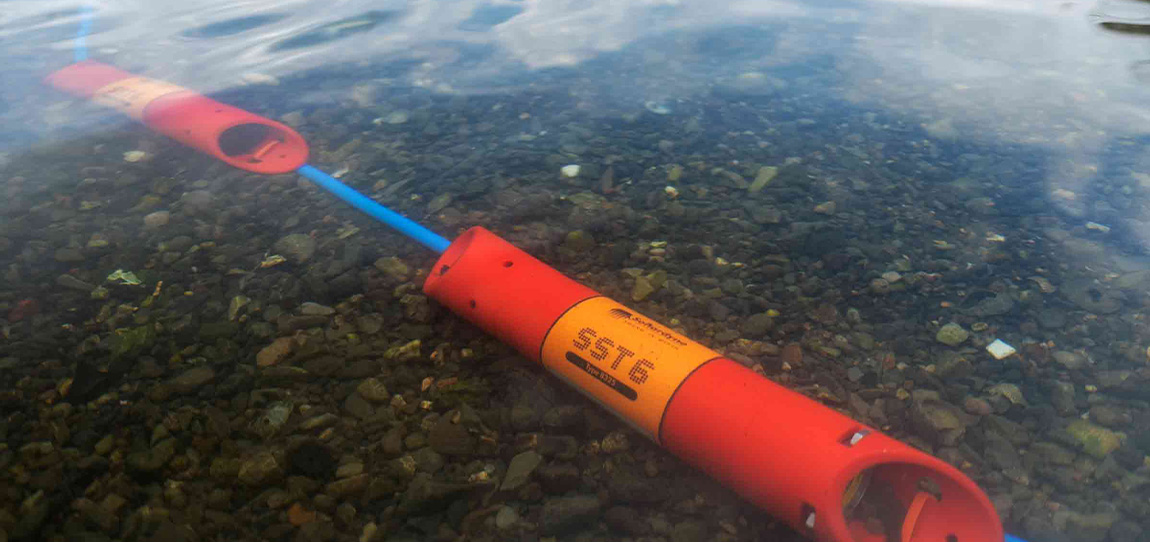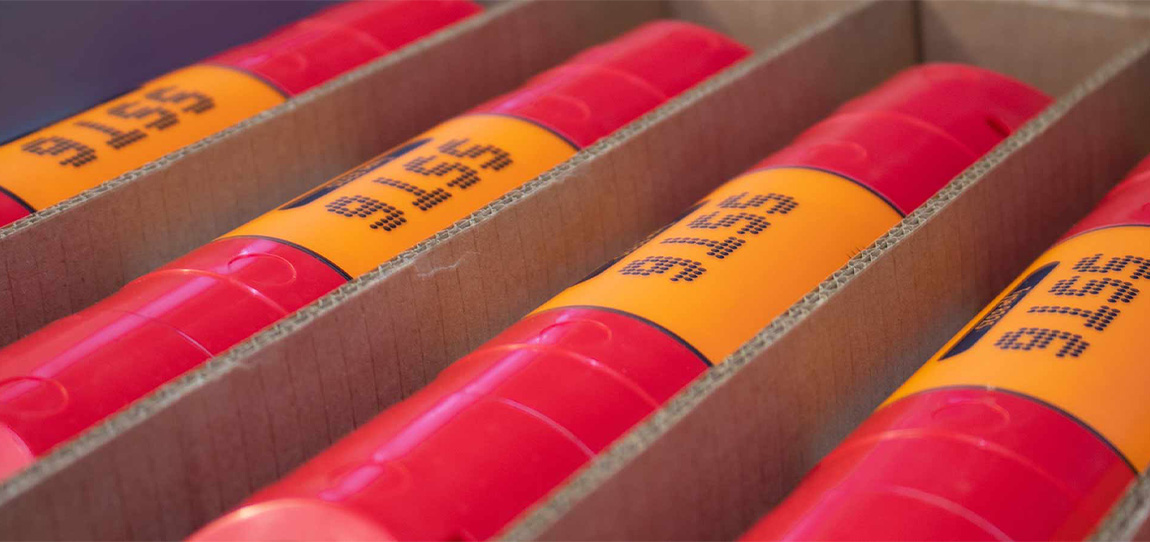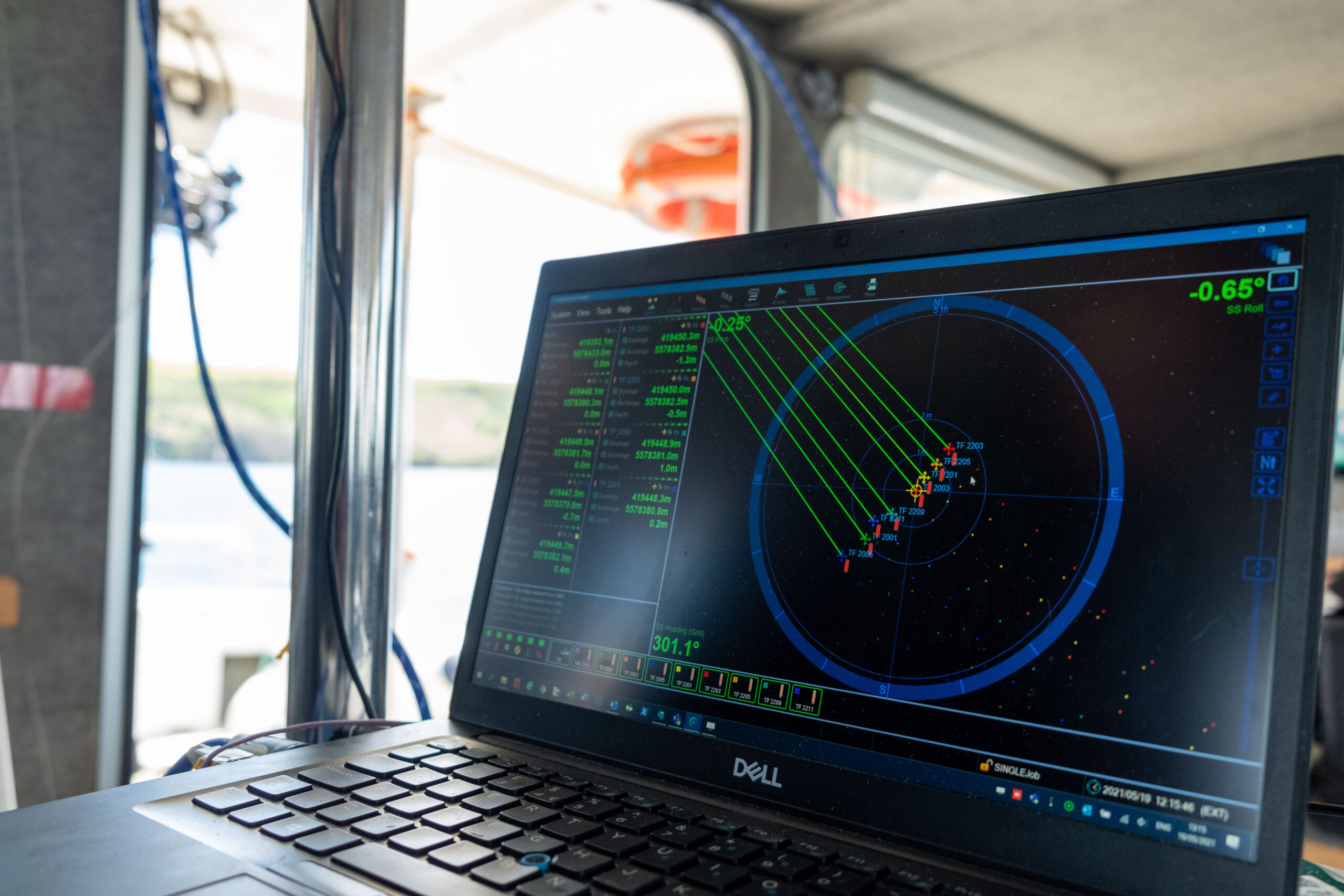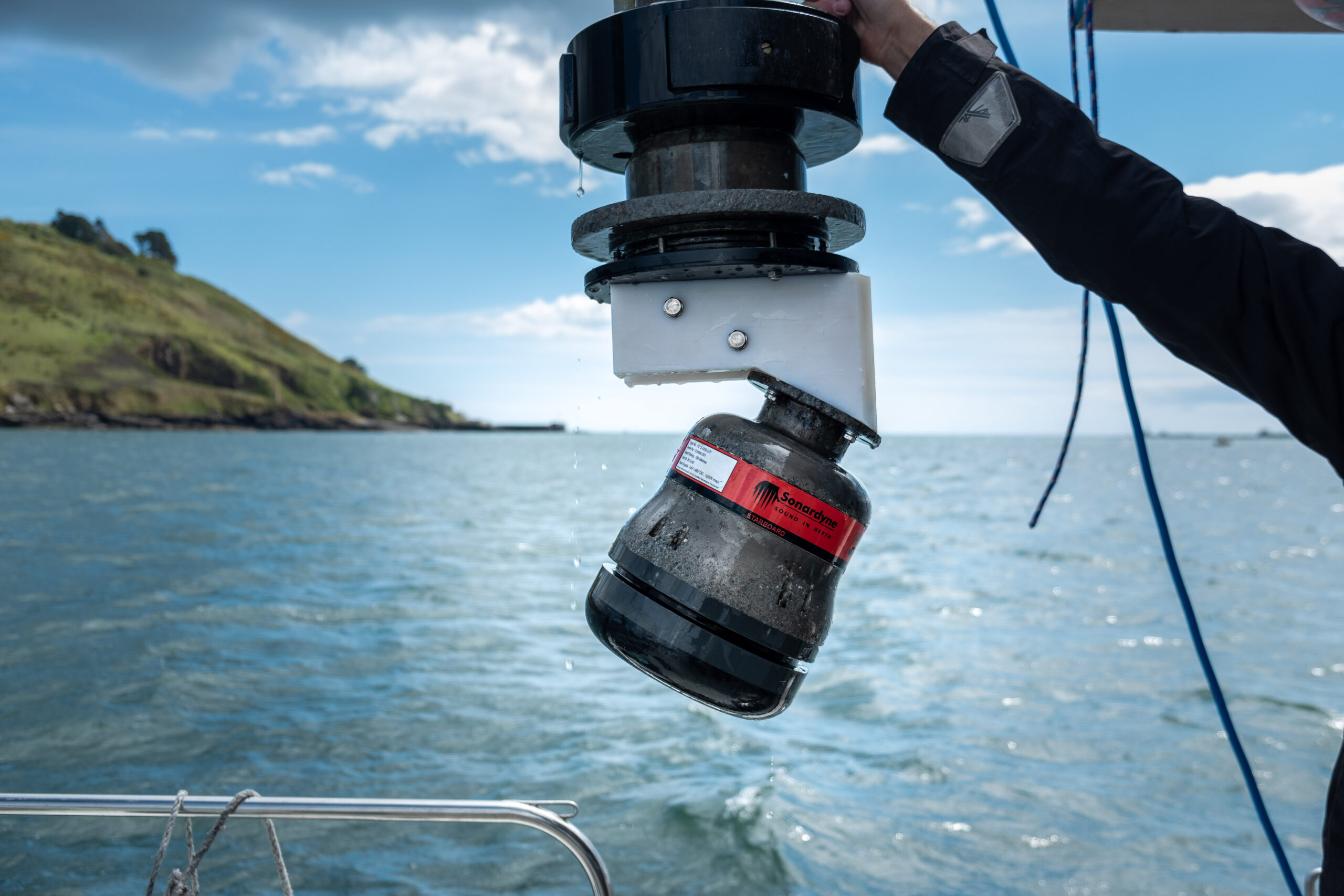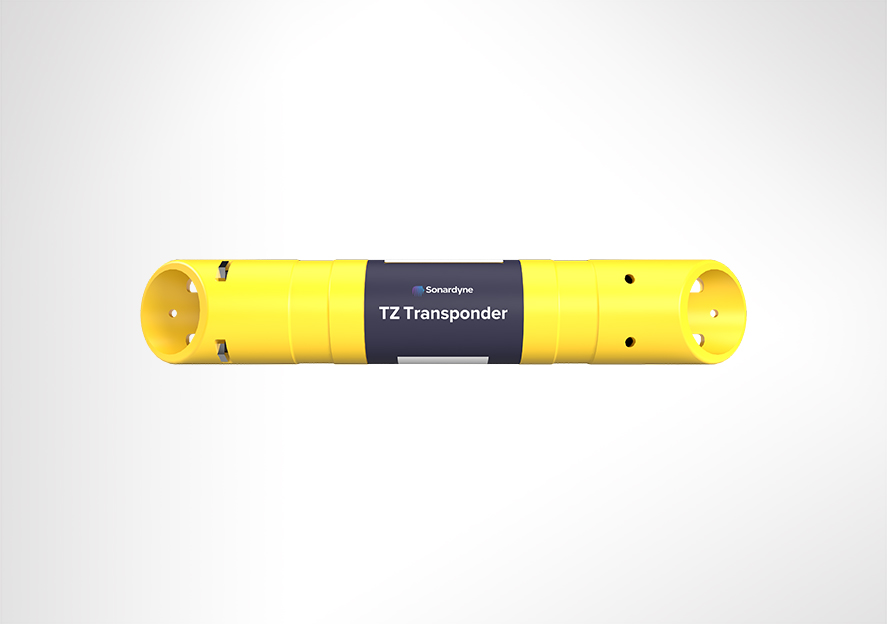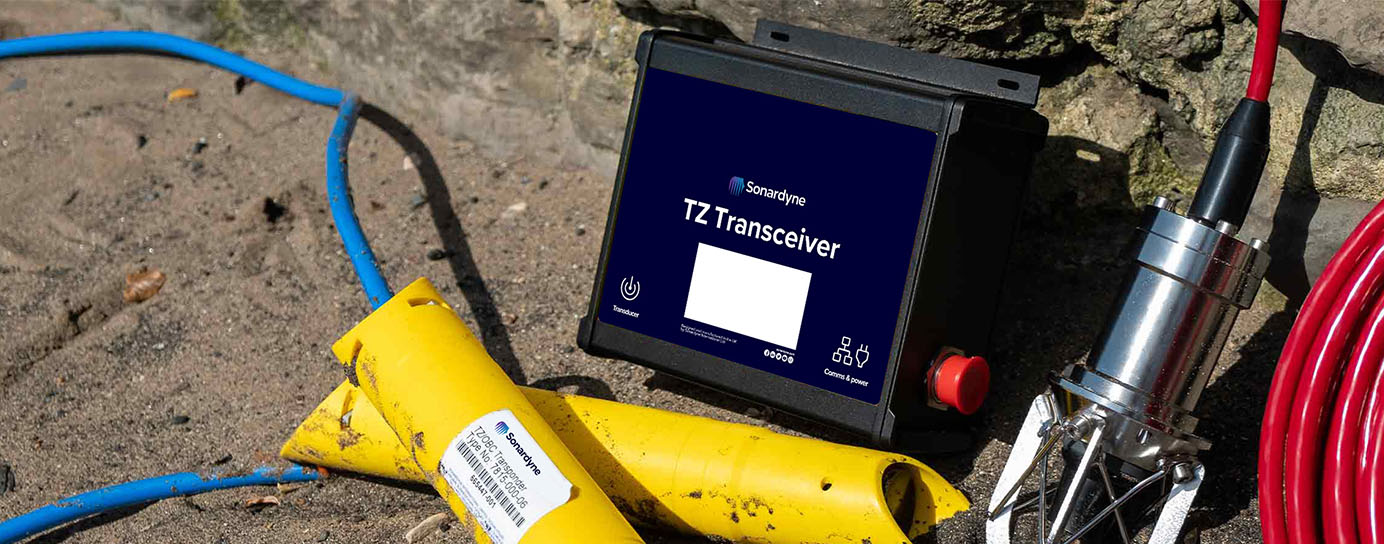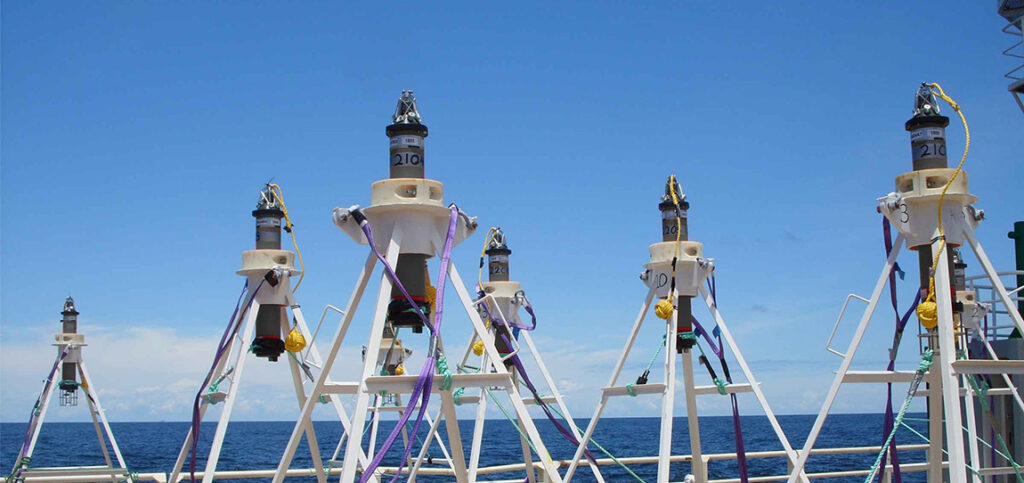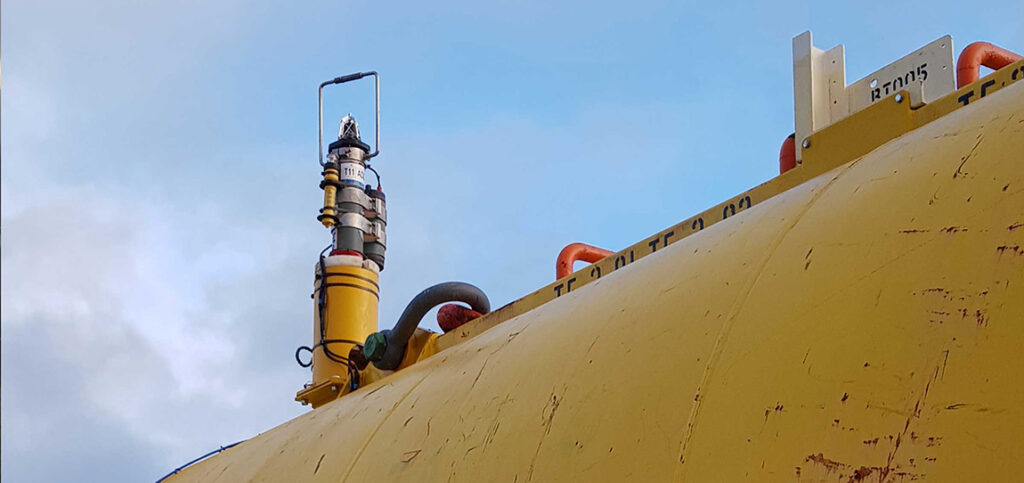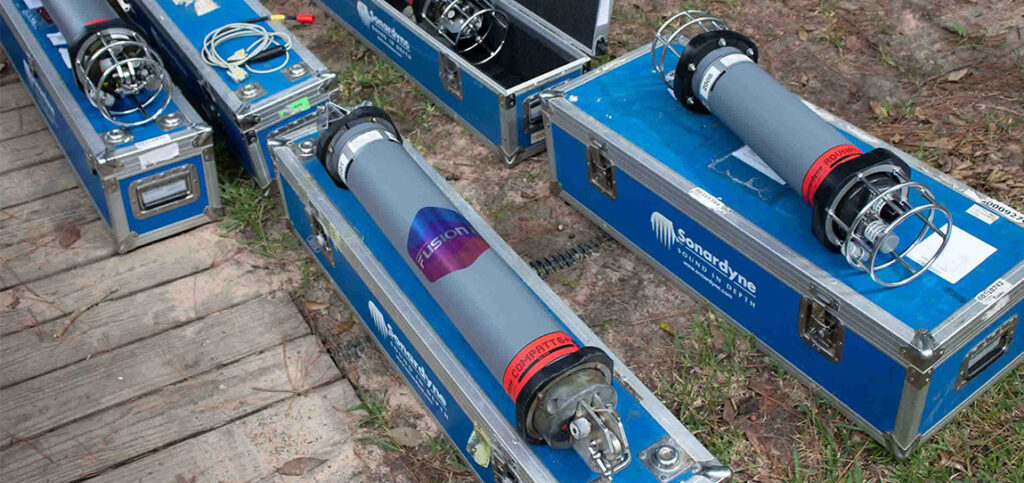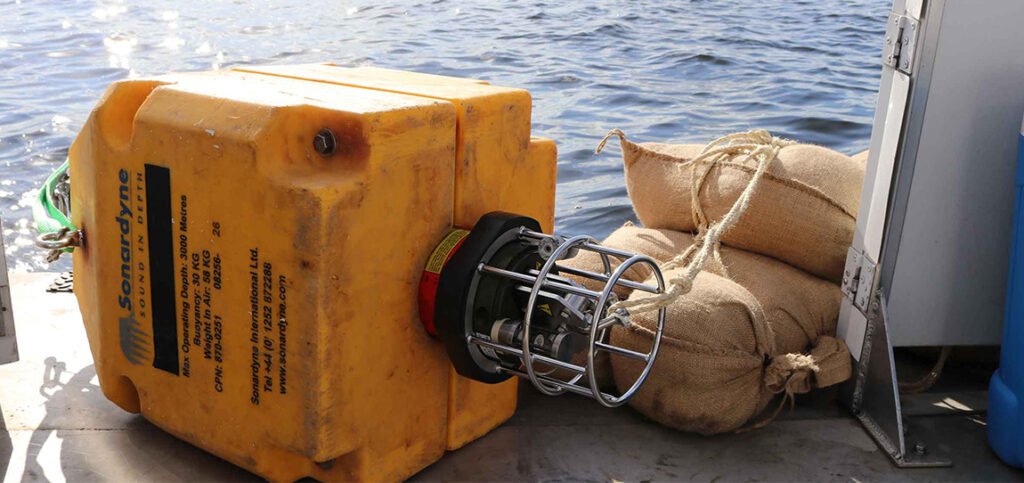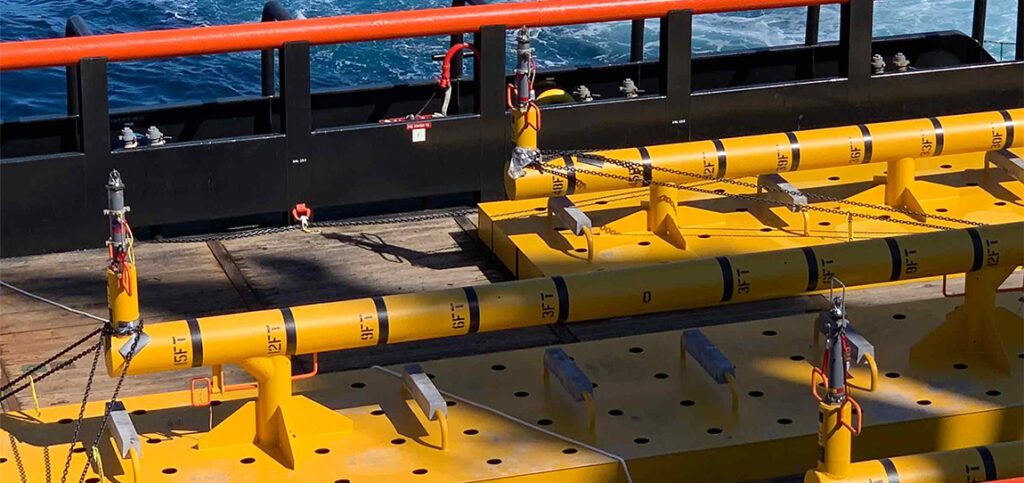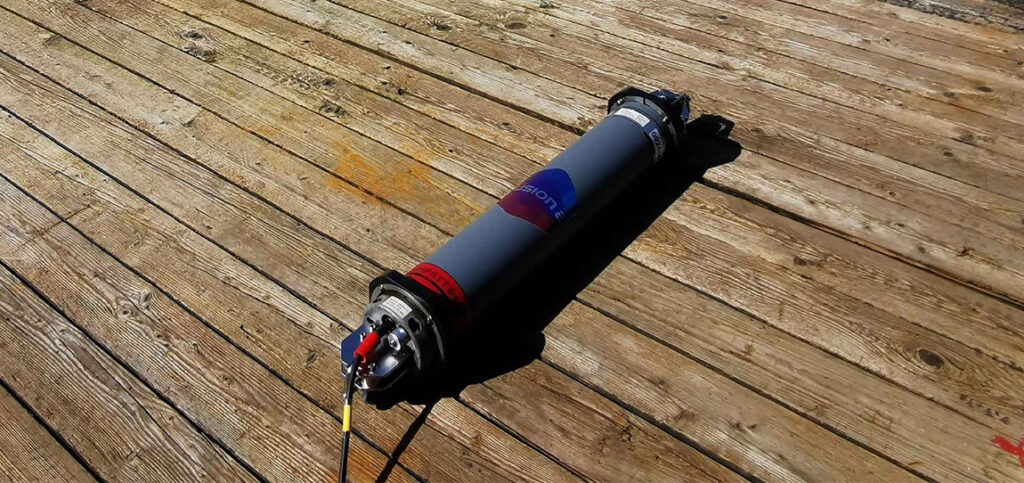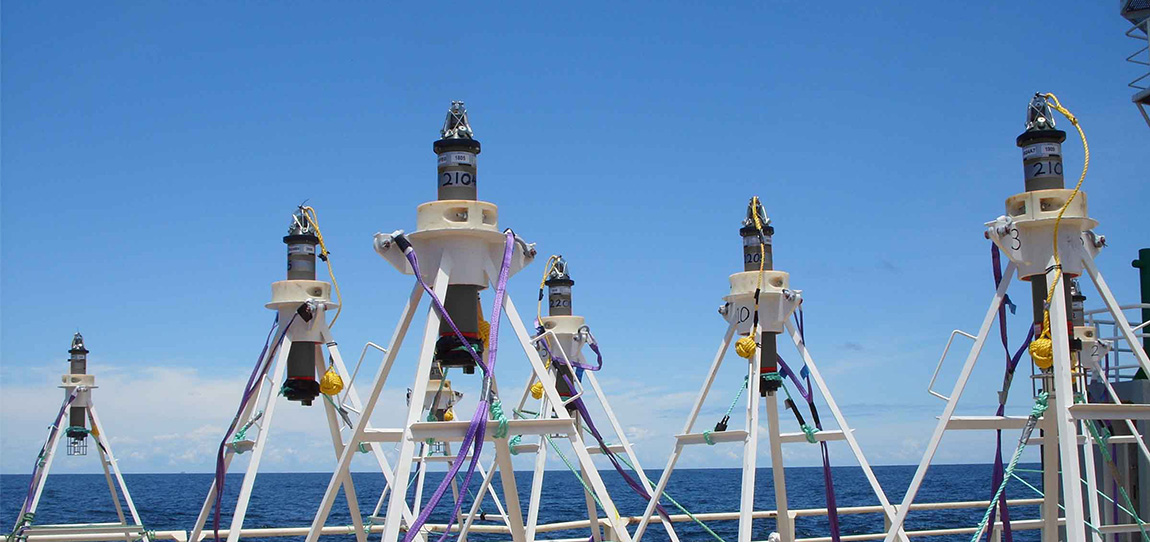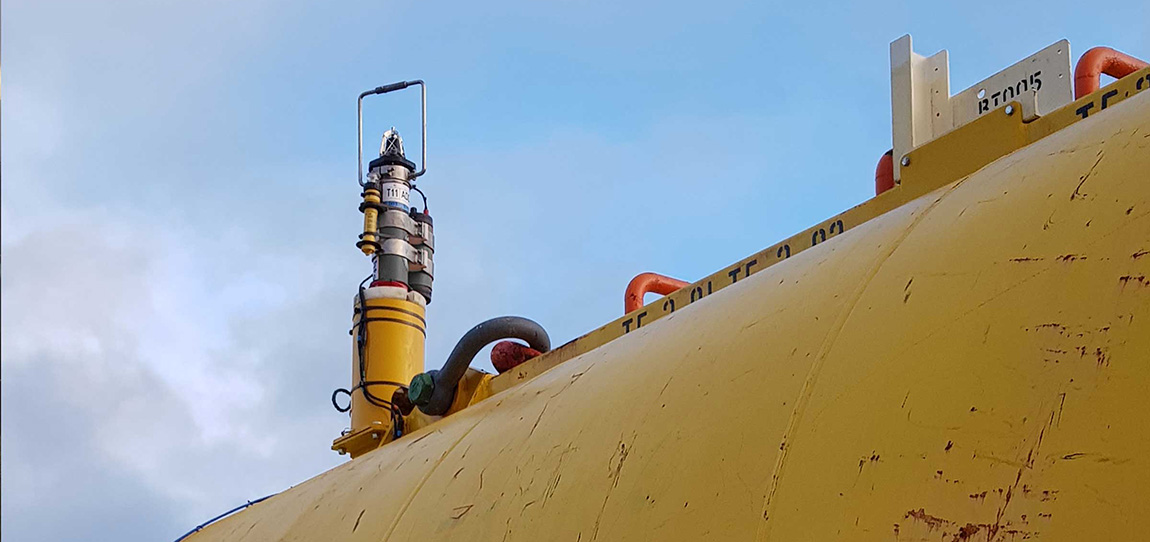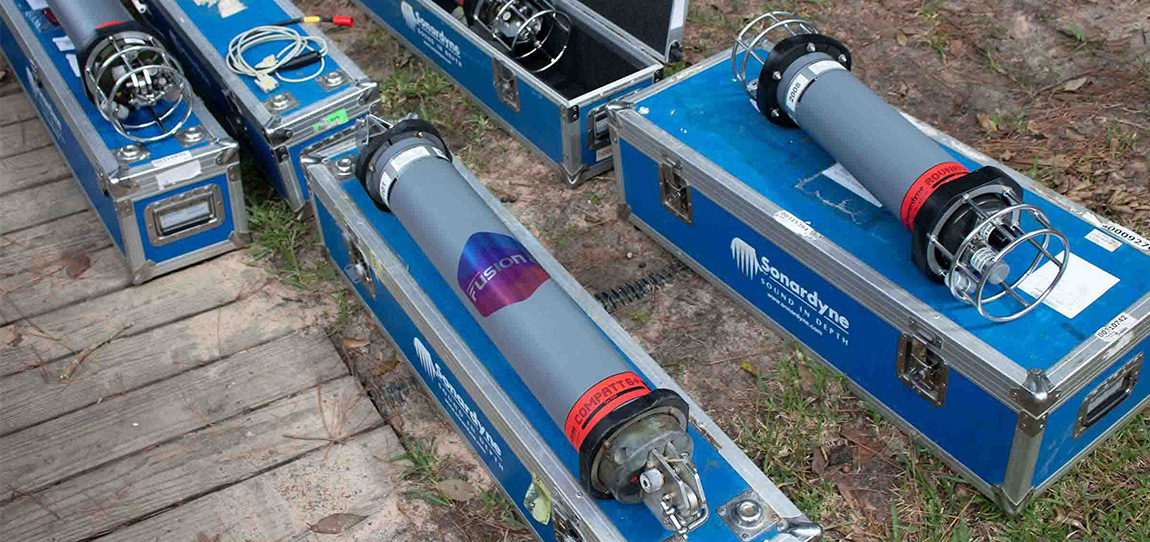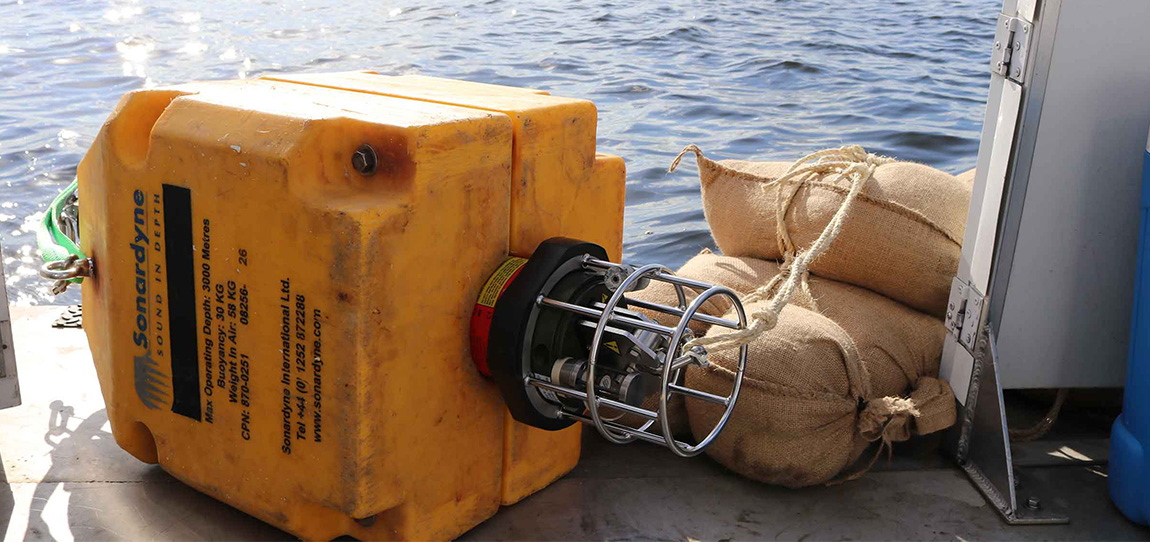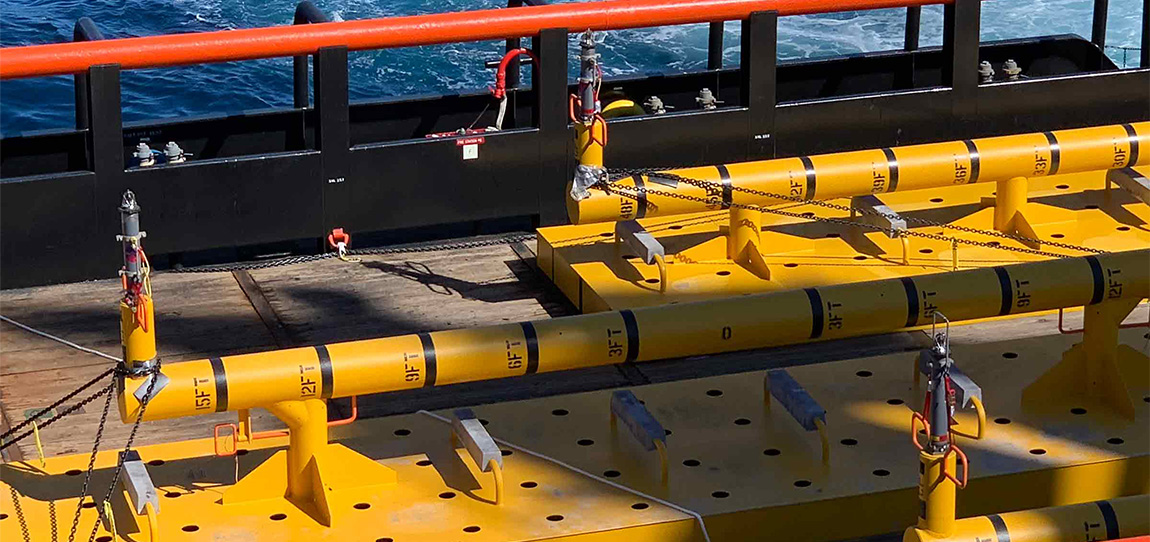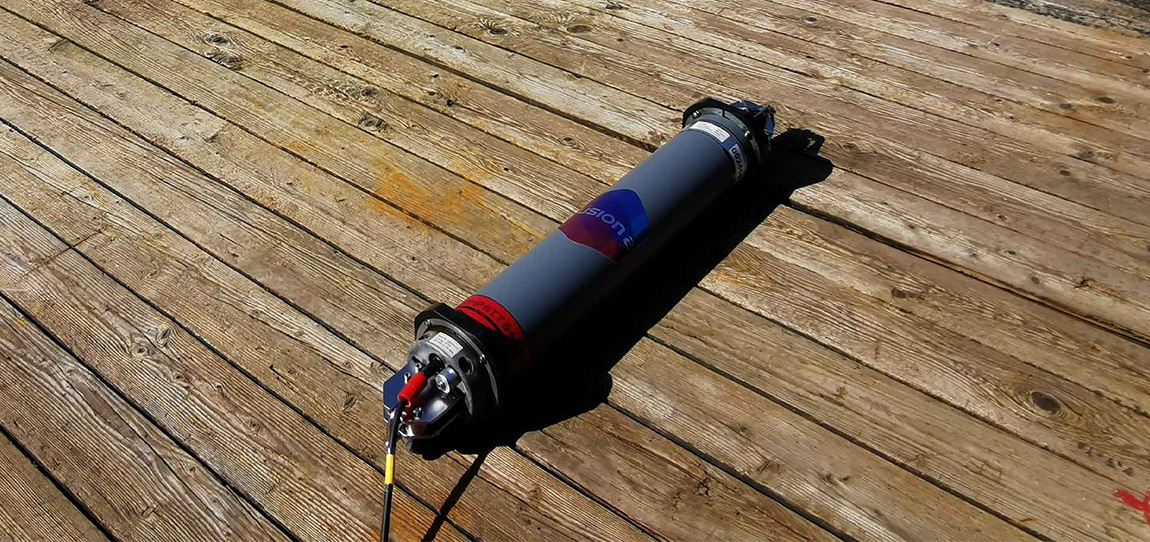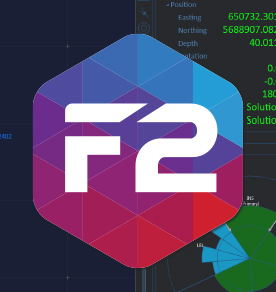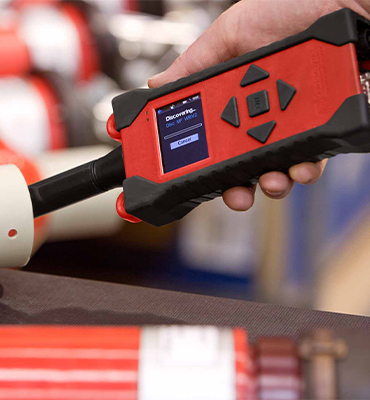Overview
Built around our field-proven 6G hardware and Wideband 2 acoustic signal platforms, Modem 6 subsea units support secure subsea-to-surface wireless data transfer at speeds between 200 and 9,000 bps.
This makes them ideal for applications such as: near real-time data streaming, data harvesting from third party sensors or subsea command and control of equipment.
Modem 6 acoustic modems are aimed at simple data transfer applications which do not require the more complex functions such as integrated (USBL) positioning, on-board sensors or complex multi-node array telemetry. If you need any of these capabilities, or an OEM solution which you can integrate into your own instrument or vehicle, our application experts will be happy to discuss your requirements and identify the right solution for you.
We offer a variety of subsea-deployed acoustic Modem 6 units to suit any operational deployment scenario and data transfer mission. You can mount them on a variety of platforms ranging from seafloor installations to an AUV and transmit sensor or platform status data between instruments or to a surface buoy or vehicle.
At a glance
- Recommended for simple data retrieval projects
- Low cost and simple to configure
- Delivers up to 9,000 bps user data rate
- Depth ratings to 5,000 m
Modem 6 Sub-Mini
Modem 6 Sub-Mini is a compact and easy-to-mount instrument, suitable for transmission of data from a wide range of sensors including: current profilers, temperatures, depth and custom instrumentation. Type 8377-1111 is depth rated to 1,000 m and has an omni-directional transducer designed for excellent horizontal and shallow water communication. Type 8377-4112 is depth rated to 4,000 m and has a directional transducer.
Modem 6 Mini
Modem 6 Mini is available in MF with an omni-directional or directional transducer designed for excellent horizontal and shallow water communication. Both versions are depth rated to 3,000 m and have an internal battery offering 30 days listening life. External trickle charging is also supported.
Modem 6 Standard
Based on the field proven mechanics of Compatt 6 and DPT 6, Modem 6 Standard is a full-sized transponder with large internal battery pack making it suitable for long term deployments of multiple years. It’s also able to power external, third party sensors. Depth ratings of 5,000 m are available.
All of our family of underwater Modem 6 instruments benefit from same mechanics and electronics you’ll find in our other 6G transponders. These are trusted by leading offshore operators to perform in the most demanding marine environments and operational scenarios.
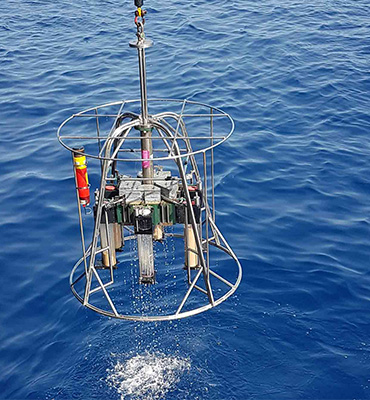
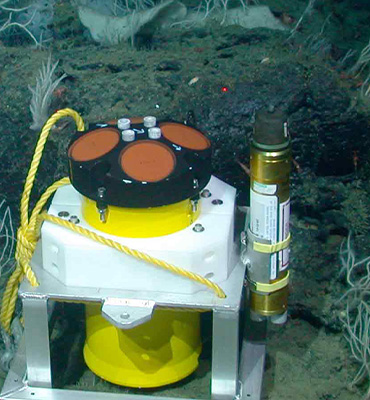
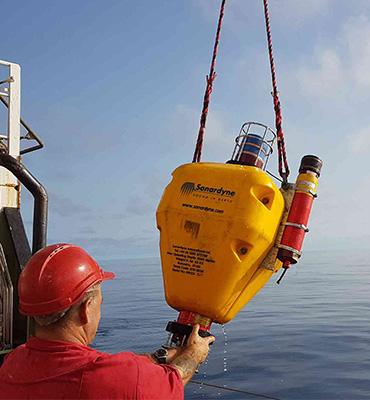
Specifications table
| Feature | Type 8377-1111 | Type 8377-4112 | Type 8244-3111 | Type 8244-3112 | Type 8307-3111 | Type 8307-3113 | Type 8307-5213 |
|---|---|---|---|---|---|---|---|
| Depth Rating | 1,000 m | 4,000 m | 3,000 m | 3,000 m | 3,000 m | 3,000 m | 5,000 m |
| Operating Frequency | MF (20–34 kHz) | MF (20–34 kHz) | MF (20–34 kHz) | MF (20–34 kHz) | MF (20–34 kHz) | MF (20–34 kHz) | MF (20–34 kHz) |
| Transceiver Beam Shape | Omni-directional | Directional | Omni-directional | Directional | Omni-directional | Directional | Directional |
| Transmit Source Level (dB re 1 µPa @ 1 m) | 181 dB | 187 dB | 181-187 dB | 187-193 dB | 187–196 dB (4 levels) | 190–202 dB (4 levels) | 190–202 dB (4 levels) |
| Power Supply | Rechargeable NiMH battery or external 24 V |
Rechargeable NiMH battery or external 24 V |
Lithium-ion or external 24 V | Lithium-ion or external 24 V | Alkaline or Lithium battery or external 24 V |
Alkaline or Lithium battery or external 24 V |
Alkaline or Lithium battery or external 24 V |
| Battery Life | >35 days | >35 Days | 30 Days | 30 Days | Alkaline = 833 days Lithium = 1390 days |
Alkaline = 833 days Lithium = 1390 days |
Alkaline = 833 days Lithium = 1390 days |
| Operating Temperature | -5 to 40°C | -5 to 40°C | -5 to 40°C | -5 to 40°C | -5 to 40°C | -5 to 40°C | -5 to 40°C |
| Storage Temperature | -20 to 55°C | -20 to 55°C | -20 to 55°C | -20 to 55°C | -20 to 55°C | -20 to 55°C | -20 to 55°C |
| Dimensions (Length x Diameter) | 420 x 75 mm | 429 x 97 mm | 501 x 94 mm | 512 x 97 mm | 955 x 200 mm (excluding release) | 925 x 200 mm (excluding release) | 925 x 200 mm (excluding release) |
| Weight in Air/ Water | 3.2/ 1.3 kg | 5.5/ 3.2 kg | 5.1/ 2.2 kg | 7.0/ 3.5 kg | 23.8/ 11.8 kg | 23.8/ 11.8 kg | 23.8/ 11.8 kg |
Frequently asked questions
How is data validated with Modem 6?
What modes are available with Modem 6?
How is data sent over the MDFT link with Modem 6?
Is there a handshaking mechanism or other link-establishing sequence?
Does Modem 6 support the MODBUS protocol?
Is simultaneous broadcasting and reception of messages supported with Modem 6?
What data rates should i expect from Modem 6?
What is the typical power consumption of a Modem 6?
How many topside modems do i need?
Which Modem 6 product best suits my application?
Modem 6 (point to point) or 6G telemetry (network comms)
How to replace a battery in Compatt 6 and 6+ family of transponders
Integration guides
Did you know?
Modem 6 (subsea) is available in a range of sizes to suit your application
Overview
Our range of subsea floatation collars enable acoustic navigation and positioning transponders to be deployed, moored on the seabed and then recovered to the surface.
The floats are compatible with all our transponders including: Compatt 6+, Compatt 6, AMT 6 and DPT 6. They can be used with directional and omni-directional transducer types.
Manufactured from high performance materials appropriate to the required depth rating, each float assembly comes in two halves and is clamped around the transponder using stainless steel fixings made of super duplex stainless steel.
Bright colours make sure good visibility, either when subsea and viewed from an ROV’s camera, or when floating on the surface prior to recovery.
At a glance
- Use it to recover seabed transponders without ROV intervention
- Choice of shapes to suit application and environment
- Available in 3,000, 5,000 and 7,000 metre depth ratings
We also supply ultra low-drag light bulb shaped float that provide significant reduction of the deflection caused by water currents and dramatically improves the stability of the transponder. The levels of both the deflection and stability directly affect the quality of the achievable positioning. The light bulb float therefore ensures optimum performance from the seabed installed transponders.
The ultra low-drag and highly stable float further allows users to deploy transponders much higher off the seabed increasing the achievable acoustic range. This reduces the required number of transponders enabling life of field positioning without requiring complicated deflection correction methods.
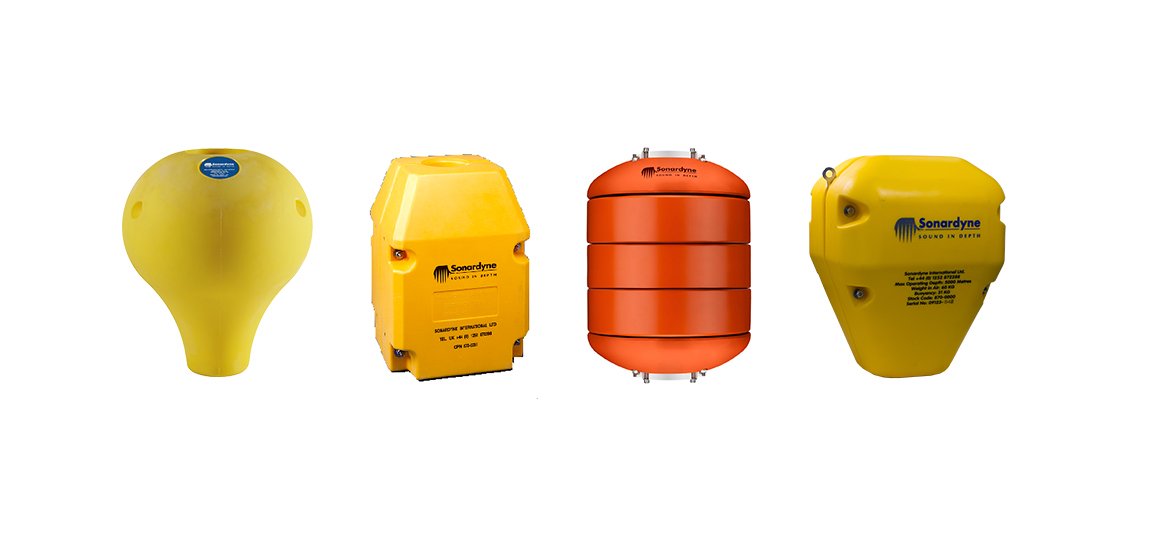
Ultra Low-Drag transponder floatation collar
Compatt/DPT transponder floatation collar
Modular float
Compatt/DPT floatation collar (directional units only)
Specifications table
| Model | Specification | |
|---|---|---|
| Floatation Collar – 3,000 m | Depth Rating | 3,000 m |
| Weight in Air | 60 kg | |
| Nett Buoyancy | 32.7 kg | |
| Dimensions (Length x Width x Diameter) | 595 x 445 x 445 mm | |
| Floatation Collar – 5,000 m | Depth Rating | 5,000 m |
| Weight in Air | 64.2 kg | |
| Nett Buoyancy | 32.1 kg | |
| Dimensions (Length x Width x Diameter) | 595 x 445 x 445 mm | |
| Floatation Collar – 7,000m | Depth Rating | 5,000 m |
| Weight in Air | 64 kg | |
| Nett Buoyancy | 27 kg | |
| Dimensions (Length x Width x Diameter) | 595 x 445 x 445 mm | |
| Floatation Collar – Directional | Depth Rating | 5,000 m |
| Weight in Air | 61 kg | |
| Nett Buoyancy | 35 kg | |
| Dimensions (Length x Width x Diameter) | 650 x 500 x 500 mm | |
| Floatation Collar – Ultra Low Drag | Depth Rating | 3,000 m |
| Weight in Air | 60.5 kg | |
| Nett Buoyancy | 34.5 kg | |
| Dimensions (Length x Width x Diameter) | 699 x 600 mm |
Frequently asked questions
Transponders
Datasheets
Did you know?
Our floatation collars are suitable for both Compatts and DPTs and are depth rated up to 7,000 m
Overview
ROVNav 6+ uses our new Wideband 3 signal technology, which is key to unlocking the benefits of your Fusion 2 LBL system.
It allows, for the first time, sensor telemetry data (e.g. pressure, depth or temperature) from a seabed or structure deployed Compatt 6+ to be embedded within navigation (ranging) data. This change has a big impact on operations such as structure installation, as breaks in tracking to get sensor reading updates at vital moments are now a thing of the past.
Its compatibility with Wideband 3 and Wideband 2 telemetry commands, and support of high power Wideband 2 ranging protocols, proven for their accuracy and robustness, means the ROVNav 6+ offers improved range and acoustic performance in challenging conditions such as on noisy vehicles or in multipath environments.
At a glance
- High power, long range LBL transceiver for ROVs
- Wideband 3-enabled supporting embedded sensor data with ranging data
- Optimised for Fusion 2 and compatible with Fusion 1
- 3,000, 5,000 or 7,000 m depth rated options
- USBL mode for emergency ROV relocation
- Modem mode for harvesting data from Sonardyne logging sensors; Fetch, AMT…
ROVNav 6+ is also a fully functional USBL responder or transponder, compatible with Wideband 2 USBL systems and HPR400. The internal li-ion rechargeable battery pack also enables emergency transponder mode, so if the umbilical and therefore power is cut to the ROV it can still be located by USBL.
The omni-directional remote MF transducer makes installation on an ROV easy. ROVNav 6+ is designed to be rugged and relatively lightweight and utilises robust underwater connectors. ROVNav 6+ supports a range of internal sensors including: strain gauge pressure, PRT temperature and MEMS based inclinometer.
ROVNav 6+ is also fully compatible with our modem and logging equipment such as AMT and Fetch products, allowing it to be used to retrieve data or configure logging regimes. It supports all of our Wideband 2 and Wideband 3 spread spectrum acoustic communication; 100 to 9,000 bps data rates can be selected depending on the environment.
Sensor options include a Digiquartz pressure sensor, precision inclinometer and altimeter interface. This provides a fully featured ROV manipulator deployable tool/sensor pack for a range of different applications including metrology, bathy survey and structure deployment operations, without the requirement for any additional interfacing on the ROV.
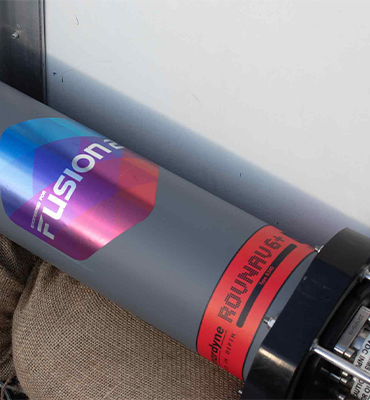
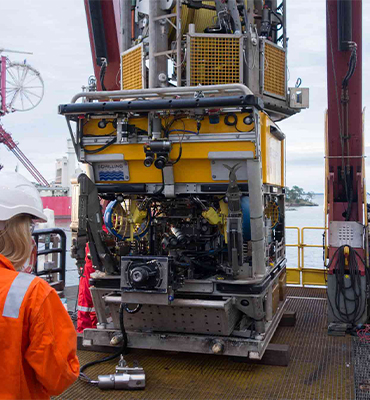
Specifications table
| Feature | 8340-3161 | 8340-5261 | 8340-7261 |
|---|---|---|---|
| Depth Rating | 3,000 m | 5,000 m | 7,000 m |
| Operating Frequency | MF (20–34 kHz) | MF (20–34 kHz) | MF (20–34 kHz) |
| Beam Shape | Omni-directional | Omni-directional | Omni-directional |
| Transmit Source Level (dB re 1 µPa @ 1 m) | 187–196 dB (4 levels) | 187–196 dB (4 levels) | 187–196 dB (4 levels) |
| Range Precision | Better than 15 mm | Better than 15 mm | Better than 15 mm |
| Serial Communications | RS232 or RS485 (half-duplex) | RS232 or RS485 (half-duplex) | RS232 or RS485 (half-duplex) |
| Battery Life Li-ion (Listening) | 3 days | 3 days | 3 days |
| Operating Voltage | 24 or 48 V dc (±10%) | 24 or 48 V dc (±10%) | 24 or 48 V dc (±10%) |
| Serial Communications Connector | Subconn (8-way female) | Subconn (8-way female) | Subconn (8-way female) |
| Remote Transducer Connector | Burton (3-way male) | Burton (3-way male) | Burton (3-way male) |
| Housing Mechanical Construction | Hard anodised aluminium 6082 | Hard anodised aluminium 6082 | Hard anodised aluminium 6082 |
| Remote Transducer Mechanical Construction | Stainless steel 316 | Stainless steel 316 | Stainless steel 316 |
| Dimensions (Maximum) (Length x Diameter) | 768 x 200 mm | 768 x 200 mm | 768 x 200 mm |
| Weight in Air/Water | 14.3/5.3 kg | 14.7/5.7 kg | 15.5/6.0 kg |
Frequently asked questions
If I’m using Fusion 2, can I choose to use Wideband 2 or Wideband 3 telemetry?
Can ROVNav 6+ be used with standard Compatt 6s?
Will my ROVNav 6 work with Fusion 2?
Do I need to upgrade to Compatt 6+ and ROVNav 6+?
Where should I install my ROVNav 6+ transducer?
What are the differences between a ROVNav 6+ and Mini ROVNav 6+ ?
How to QC a Sound Velocity (SV) in Fusion 2
How far can my Compatt 6+ be above the seabed?
How do I perform an LBL calibration in Fusion 2?
STP files
Software and firmware
Transponders
Datasheets
Manuals and quick start guides
Technical bulletin
Did you know?
ROVNav 6+ is compatible with Fusion 1 and can be depth rated up to 7,000 m
Overview
Acoustic release transponders are a vital pieces of ocean equipment – relied upon by energy, defence and science users to moor valuable equipment strings for years at a time, and when commanded to do so, reliably return equipment and logged data to the surface.
Transponders need to be tough, reliable and easy to work with. The RT 6-HD meets these requirements.
Part of our new range of acoustic releases, RT 6-HD combines the extensive mechanical design track record with the flexibility of our 6G platform, resulting in enhanced battery life and perhaps most significantly, compatibility with our Ranger 2 USBL system.
At a glance
- Tested, loaded, deployed and released with Deck Topside
- Also works with Ranger 2 USBL to lift, lower and track heavy subsea structures in deep water
- Working Load Limit 2,500 kg (4:1)
- Depth rated to 7,000 m
- Highly reliable release mechanism
- Compact and rugged design
With RT 6-HD, you use your vessel’s Ranger 2 USBL to deploy, track, locate and command the instrument – removing the need for a separate topside unit. If you don’t have access to a Ranger 2 USBL, our rugged and lightweight Deck Topside with an over-the-side dunker is all you need to both configure and command RT 6-3000s.
With a WLL of 2,500 kg (at 4:1), twice that of our RT 6-3000 and RT 6-6000, RT-HD is designed for specialist heavy lift application scenarios such as deep water construction and salvage.
RT 6-HD is also our deepest rated acoustic release transponder at 7,000 m. Excellent corrosion resistance is achieved by using super duplex stainless steel for the housing materials.
RT 6-HD is configured with our iWand hand-held acoustic transponder test and configuration device.
High WLL
The highest standard WLL of 2,500 kg of any of our transponders without any additional load amplification frames.
Choice of topsides
You can use our rugged Deck Topside or, if you’ve got access to a Ranger 2 USBL system on your survey or research vessel, then you have everything you need to control your RT 6-HD.
Versatile
RT 6-HD is more than just an acoustic release. It can be tracked with our Ranger 2 USBL making relocating and recovering it fast and simple.
Specifications table
| Feature | Type 8322 |
|---|---|
| Depth Rating | 7,000 m |
| Operating Frequency | LMF (14–19 kHz) |
| Transducer Beam Shape | Hemispherical |
| Transmit Source Level (dB re 1 µPa @ 1 m) | 188 dB |
| Tone Equivalent Energy (TEE) | 192 dB |
| Receive Threshold (dB re 1 µPa) | <90 dB |
| Working Load Limit (4:1) | 2,500 kg |
| Proof Load | 5,000 kg |
| Breaking Load | 10,000 kg |
| Battery Life (Alkaline) | >36 months active |
| Inclinometer Accuracy | ±5° |
| Surface Unit | Deck Topside, Ranger 2 USBL |
| Mechanical Construction | Super duplex stainless steel |
| Operating Temperature | -5 to 40°C |
| Storage Temperature | -20 to 55°C |
| Dimensions (Maximum) (Length x Diameter) | 691 x 164 mm |
| Weight in Air/Water | 24.5/20 kg |
| Options | Deep Water Deck Kit (Deck Topside) – 602-0180 |
Frequently asked questions
Software and control hardware
Manuals and quick start guides
Did you know?
RT 6-HD can be deployed using Deck Topside
Overview
SST 6 is a small rugged transponder designed to acoustically position of ocean bottom seismic cables and nodes, where high performance, small size, low cost and ease of programming are all important operational factors.
SST 6 incorporates our Wideband 2 digital acoustic signal processing architecture to deliver substantial performance gains over the previous generation SST, ensuring robust positioning performance in the most challenging of operational environments.
Innovations such as built-in, near field communications (NFC) technology, allow SST 6 transponders to be checked and programmed without human intervention, supporting operators’ vision for fully automated node handling and efficient back-deck ocean bottom seismic (OBS) operations.
At a glance
- Accurately positions seismic cables and nodes in water depths to 3,000 m
- Designed on 6G hardware and Wideband 2 technology platforms
- Compatible with Mini-Ranger and Ranger 2 USBL positioning systems
- Choice of depth ratings: 1,000 m or 3,000 m
- Over 1,520 unique acoustic transponder addresses supports large surveys
- Automated programming using NFC link without human intervention
SST 6 operates in the Medium Frequency (MF) band and is compatible with our Ranger 2 USBL systems. Ranger 2 USBL systems measure both range and bearing to SST 6 in the same operation, so an accurate position of the node or cable can be determined very quickly and at a high update rate.
Combining the use of Ranger 2 USBL and SST 6 in this way results in considerable savings in vessel time and new standards of efficiency for seismic operations.
NFC allows fast programming of 16 group interrogation addresses and 95 reply channels providing more than 1,520 unique acoustic identities.
This allows the marking of seismic cables and other applications demanding dense transponder coverage. SST 6 is configured using NFC with a suitable NFC-enabled handset (including NFC enabled Android™ handsets with the Sonardyne NFC App) or a dedicated HF radio frequency identification (RFID) reader.
The NFC link provides the ability to enter SST 6 into a storage mode when not in use, significantly increasing the overall battery endurance.
Specifications table
| Feature | Type 8325-1111 | Type 8325-3311 |
|---|---|---|
| Depth Rating | 1,000 m | 3,000 m |
| Operating Frequency | MF (20–34 kHz) | MF (20–34 kHz) |
| Transmit Source Level (re 1 µPa @ 1 m) | 187 dB | 187 dB |
| Battery Life | 9.5 Months | Battery Life |
| Operating Temperature | -5 to 40°C | -5 to 40°C |
| Storage Temperature | -20 to 55°C | -20 to 55°C |
| Dimensions (Length x Diameter) | 385 x 63 mm | 385 x 63 mm |
| Weight in Air/Water | 1.0/0.3 kg | 2.0/1.3 kg |
Frequently asked questions
STP files
Transponders
Datasheets
Manuals and quick start guides
Did you know?
SST 6 is compatible with Mini-Ranger and Ranger 2 USBL positioning systems
Overview
Prior to deployment from a cable lay boat, the transponders are attached to the seismic cable at each ground station, typically every 50 metres. Once the bottom cable is laid, the acoustic system measures the ranges from the surface transceiver to the transponders to enable their exact positions to be established. This positioning process can either be conducted while laying the cable or later while shooting.
The transponders are small and lightweight and have been proven to be able to withstand the demanding and varied operational environment of OBC and TZ surveys.
At a glance
- Use it to position OBS cables in water depths up to 500 metres
- Built to withstand rugged operational environments
- Thousands of unique acoustic addresses
- Up to 18 months’ listening life
- Optional RFID tag for easy asset tracking
Standard features include a depth rating of 500 metres, a unique acoustic ‘address’ enabling thousands of units to be laid in a single deployment and automatic battery voltage monitoring to allow users to better plan their maintenance schedules.
In OBC operations using a ‘squirter’ cable deployment system, ‘carapaces’ are available that provide a fast and secure means of attaching transponders to the cable. The carapaces are manufactured from tough plastic that encapsulates the transponder and optional RFID asset tracking tag, clamping it securely to the cable whilst protecting it from the high cable deployment and recovery speeds.
The carapace design, which is now in use with many crews around the world, has been proven to be easy to fit and reduces long term maintenance when compared with traditional tie-wrap and tape methods. The low profile shape of the carapace also reduces the risk of snagging and as it is acoustically ‘quieter’ in the water, creating less noise interference down the cable.
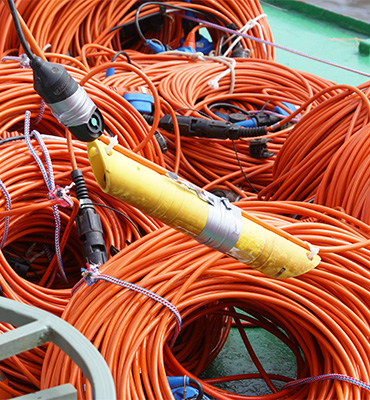
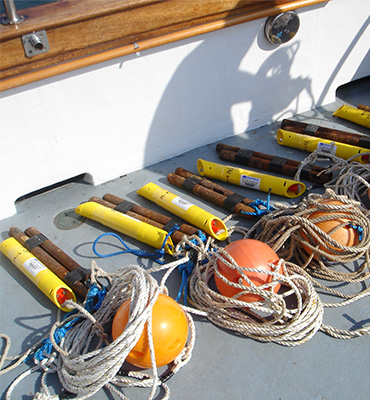
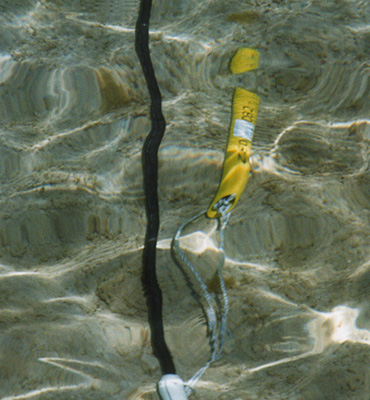
Specifications table
| Feature | Type 8365-0001 | Type 8365-0002 |
|---|---|---|
| RFID Tag | No | Yes |
| Depth Rating | 500 m | 500 m |
| Operating Frequency | HF (33–50 kHz) | HF (33–50 kHz) |
| Transmit Source Level (dB re 1 µPa @ 1 m) | 184–187 dB | 184–187 dB |
| Receive Sensitivity (dB re 1 µPa) | 105–115 dB | 105–115 dB |
| Number of Unique Addresses | 3609 (field programmable) | 3609 (field programmable) |
| Battery Life (Alkaline) | 18 months | 18 months |
| Mechanical Construction | Anodised aluminium alloy and plastic | Anodised aluminium alloy and plastic |
| Operating Temperature | -5 to +40°C | -5 to +40°C |
| Storage Temperature | -20 to +55°C | -20 to +55°C |
| Dimensions (Length x Diameter) | 433 x 63 mm | 433 x 63 mm |
| Weight in Air/Water | 1.1/0.2 kg | 1.1/0.2 kg |
| Deck Unit | Type 7967-000-02 (includes transducer and 10 m of cable) | Type 7967-000-02 (includes transducer and 10 m of cable) |
Frequently asked questions
Manuals and quick start guides
Did you know?
TZ transponder is part of our TZ OBC system
Overview
Compatt 6+ is used for high precision survey and construction operations in all water depths, including: spool piece metrology, pipeline touchdown monitoring, structure installation and dynamic positioning reference.
Compatt 6+ offers significant time saving with fast update rates (up to 1 Hz LBL tracking), all made possible using the Wideband 3 acoustic telemetry protocols. Support of Wideband 2 ranges maintains backwards compatibility. This makes any system operating with Compatt 6+ significantly easier to operate therefore de-risking operations, reducing vessel time and reducing training requirements for offshore personnel.
At a glance
- Compatible with all 6G LBL, INS and USBL systems
- Wideband 3 enabled
- Versatile, flexible and cost-effective
- Over 3,600 different configurations available
- Choice of depth ratings to 7,000 m
Our Wideband advanced signal processing offers improved acoustic performance in challenging conditions, longer ranges, improved multipath rejection around structures and real-time range diagnostics for quality control. Wideband also reduces the interference to and from adjacent Sonardyne and other acoustic positioning systems.
The integrated communications and navigation technology allows the transponder to be used as a multi-purpose modem, autonomous data logger and navigation reference transponder.
Wideband 3
For the first time, sensor telemetry data (e.g. pressure, depth or temperature) is embedded within ranging data so no more waiting for sensor readings at vital moments.
Compatible
Compatt 6+ transponders are backwards compatible with your existing Compatt 6 inventories so you can mix and match in the field.
Upgradable
We can upgrade your existing Compatt 6 into plus units quickly and cost effectively meaning you can go on to realise the full benefits of Fusion 2.
Overview
Compatt 6+ is used for high precision survey and construction operations in all water depths, including: spool piece metrology, pipeline touchdown monitoring, structure installation and dynamic positioning reference.
Specifications table
| Feature | Type 8300-3111 | Type 8300-3113 | Type 8300-5213 | |
|---|---|---|---|---|
| Depth Rating | 3,000 m | 3,000 m | 5,000 m | |
| Operating Frequency | MF (20–34 kHz) | MF (20–34 kHz) | MF (19–34 kHz) | |
| Transducer Beam Shape | Omni-directional | Directional | Directional | |
| Transmit Source Level (dB re 1 µPa @ 1 m) | 187–196 dB (4 levels) | 190–202 dB (4 levels) | 190–202 dB (4 levels) | |
| Tone Equivalent Energy (TEE) | 193–202 dB | 196–208 dB | 196–208 dB | |
| Receive Sensitivity (dB re 1 µPa) | 90–120 dB (7 levels) | 80–120 dB (7 levels) | 80–120 dB (7 levels) | |
| Ranging Precision | Better than 15 mm | Better than 15 mm | Better than 15 mm | |
| Number of Unique Wideband 2 Addresses | >300 | >300 | >300 | |
| Battery Life (Listening) | Alkaline | 833 days | 833 days | 833 days |
| Lithium | 1,390 days | 1,390 days | 1,390 days | |
| External Power Supply | 24 V | 24 V | 24 V | |
| Safe Working Load (4:1) | 250 kg | 250 kg | 250 kg | |
| Operating Temperature | -5 to 40°C | -5 to 40°C | -5 to 40°C | |
| Storage Temperature | -20 to 55°C | -20 to 55°C | -20 to 55°C | |
| Dimensions (Maximum) (Length x Diameter) |
With Sensor Guard | 1,034 x 200 mm | 1,018 x 200 mm | 1,018 x 200 mm |
| Without Sensor Guard | 1,034 x 178 mm | n/a | n/a | |
| Weight in Air/Water | 23.8/11.8 kg | 27.0/14.0 kg | 29.0/15.0 kg | |
| Endcap Sensors and Options | ||||
| Temperature (±0.1°C) | Standard | Standard | Standard | |
| Tilt Switch (±30–45°) | Standard | Standard | Standard | |
| Strain Gauge Pressure Sensor (±0.1%) | Standard | Standard | Standard | |
| High Precision Strain Gauge (±0.01%) Presens or Keller |
Optional | Optional | Optional | |
| Feature | ||||
| Paroscientific DigiQuartz Pressure Sensor 1,350 m, 2,000 m, 4,130 m, 6,800 m (±0.01%) |
Optional | Optional | Optional | |
| Inclinometer (Tilt Sensor) Range ±90°, Accuracy: ±1° |
Standard | Standard | Standard | |
| High Accuracy Inclinometer
Range: ±90°, Accuracy: ±0.05° over 0 – ±15°; ±0.2° over 0 – ±45° |
Optional | Optional | Optional | |
| Sound Velocity Sensor ±0.02 m/s Accuracy Under Calibration Conditions | Optional | Optional | Optional | |
| Release Mechanism | Standard | Standard | Standard | |
| Power for External Sensors | Standard | Standard | Standard | |
| Gyro Input | Standard | Standard | Standard |
Frequently asked questions
Compatt 6 and 6+ Deployment Tests
Frequency management is obsolete. Here’s why.
6G Terminal Lite Range Test
When to use a float, when to use a stand?
How can I get the best performance from my long layback tracking operations?
How can I deploy my Compatt 6+ using iWand?
How to correctly set a Compatt 6+ release mechanism
Does Compatt 6+ have modem capabilities?
How often do endcap sensors need calibrating to keep them in spec?
Is it possible to position Compatt 6+s independently within the same array and send each positioning out of Fusion to our navigation software?
Will Compatt 6+ work with Ranger 2 and Marksman?
I want to buy standard red Compatt 6, are they still available for sale?
Can Compatt 6+ be used in the same LBL array as standard Compatt 6?
What is the difference between Compatt 6 and Compatt 6+?
If I’m using Fusion 2, can I choose to use Wideband 2 or Wideband 3 telemetry?
Can ROVNav 6+ be used with standard Compatt 6s?
Will my ROVNav 6 work with Compatt 6+?
Do I need to upgrade to Compatt 6+ and ROVNav 6+?
How to QC a Sound Velocity (SV) in Fusion 2
How far can my Compatt 6+ be above the seabed?
How to replace a battery in Compatt 6 and 6+ family of transponders
How to plan my sparse LBL array (guidance note)
How do I calibrate my sparse LBL array?
How do I set up structure deflection monitoring (SDM) in Fusion 2?
Can I use Compatt 6+ Multiuser in Fusion 2?
How do I perform a SLAM calibration in Fusion 2?
How do I set up sound speed collection and pressure to depth conversion in Fusion 2?
Software and firmware
Software and control hardware
Transponders
Datasheets
Manuals and quick start guides
Did you know?
Compatt 6+ uses Wideband 3 technology
